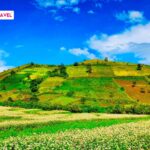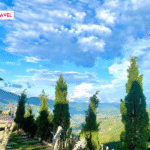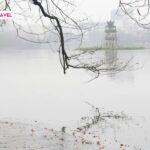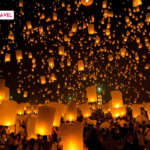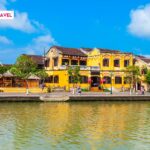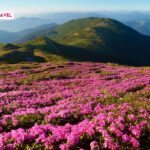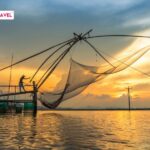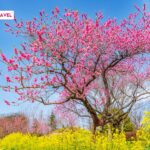You can visit Vietnam any time of the year — and each season will show you a different face of this beautiful country. But if you ask me, Quang, about the best time to visit Vietnam, the answer goes beyond weather charts. It’s in the feeling of waking up to morning mist in Sapa, or walking barefoot on a quiet beach in Ninh Thuan under golden sunlight that feels like honey.
With climates ranging from temperate in the north to tropical in the south, choosing the right time to travel can turn your trip into a symphony of light, scent, and emotion. I’ve traveled through the rainy season, missed buses in the foggy mountain passes, and wandered under a conical hat through a spring market in Central Vietnam — and through all of that, I’ve learned one thing: the best time isn’t just about sunshine. It’s about that perfect moment when you and Vietnam meet each other in your best form.
This guide will walk you through regions, seasons, and experiences — so you can find your own best time to visit. And who knows? It might just be the moment you fall in love with Vietnam like an old friend rediscovered.
Time Point Ideal Place to Visit Vietnam
In short: The best time to visit Vietnam is from March to April and October to November – when the weather is mild, there is little rain, and the number of tourists is not too crowded. This is the ideal time to experience the diverse beauty of the country from North to South without being hindered by harsh climate or crowded.
During these months, the weather is very pleasant in all regions. Mild temperatures, little rain, and notably fewer tourists than in the high season, make for a comfortable environment to explore the country. These months also avoid the rainy season, especially in the South (June to August) and Central (September to November), when there can be prolonged heavy rains.
Vietnam’s peak season is usually from December to February, when the weather is cool and pleasant, but also attracts a large number of tourists, especially during the Lunar New Year. If you want to avoid the crowds and enjoy a quieter atmosphere, March-April and October-November are the ideal times to visit.
For me, every trip to Vietnam has a special moment when you choose the right time. For example, in March-April, when I got off the bus to Sapa, the cool morning air was so pleasant, and the plum and peach blossom fields were in full bloom, like a perfect spring picture. Hanoi in April, when the streets are quieter but filled with the colors of flowers, feels like I am immersed in a separate space of heaven and earth.
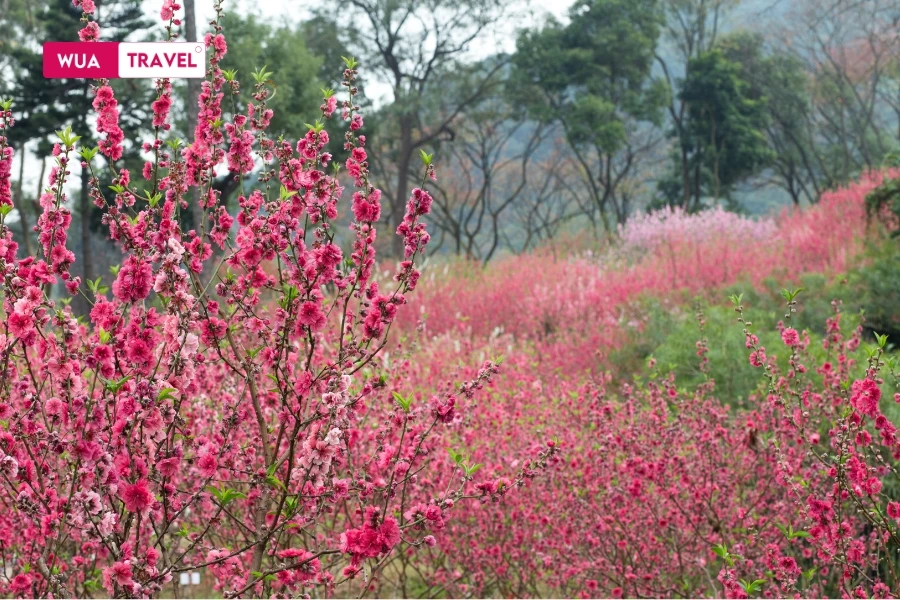
In October and November, when I visited Hoi An, the small streets were deserted with tourists, the gentle breeze and the late autumn sunlight made the landscape seem to be tinged with nostalgia. It was a time that not only helped me feel the beauty of nature but also enjoy the peace of an ancient city.
I have also tried trips in the low season, from June to August, when the heat and humidity sometimes forced me to take shelter under the awnings of cafes. However, it is these small moments that made me love the beauty of Vietnam, where each season has its own distinct nuances. Every trip, whether in high or low season, has brought me unforgettable memories.
Ideal Time By Region In Vietnam
One of the things that makes Vietnam special in Quang’s eyes – and perhaps in the eyes of many other travel enthusiasts – is its diversity of climate. Stretching from North to South, each region wears a different weather coat. At the same time of year, you can wear a sweater in Ha Giang, stroll in the gentle sunshine in Hoi An, and end the day with a warm sunset on Phu Quoc beach. It is this difference that makes choosing ideal time to travel to each region becomes more important than ever.
I have traveled through many times a year to feel the changes of the land and sky in each place. And below are the best times in each region, not only based on the weather, but also based on the real emotions I have experienced.
The North – Each season has its own beauty
In short: The North is most beautiful in March-April and September-November, when nature changes seasons, suitable for cloud hunting, terraced fields viewing, or strolling the old town in the scent of milk flowers.
Should avoid: December–February (cold winter, lots of fog)
The North is the only place in Vietnam that has all four seasons – spring, summer, autumn, winter – and each season has its own unique characteristics. Personally, Quang always feels that the spring and fall is the time that makes this land most poetic spring, when peach and plum blossoms began to bloom across the mountains and forests of the Northwest, I had a memorable trip to Moc Chau. Early in the morning, the mist lightly covered the tea hills, the cold air completely awakened me after a long journey. On the roadside, Mong girls wearing colorful brocade dresses giggled, like small flowers in the vast sky and earth.
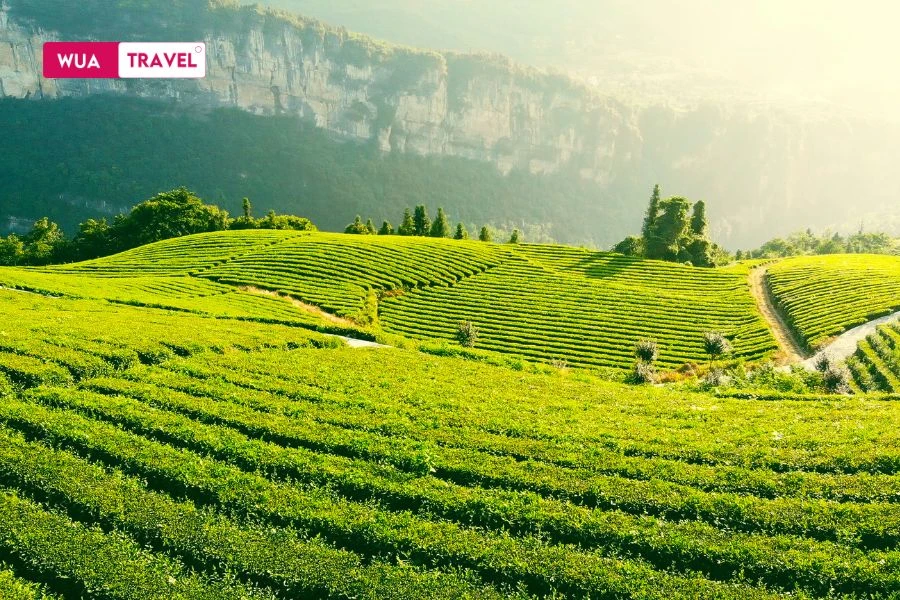
Still autumn In the North, especially in Hanoi and mountainous areas like Ha Giang, it is truly a gentle love song. I once rode a motorbike through the Quan Ba - Dong Van route in mid-October, when the terraced fields were in harvest season. The strong aroma of ripe rice mixed with the wind, the sunlight dyed the entire valley golden, and the feeling of drinking a glass of warm corn wine in the highland night made all fatigue disappear.
However, if you are not used to the cold, avoid winter– from December to February – because of the cold weather, thick fog, sometimes covering the whole day without clearing, especially in Sapa or Ha Giang.
Central Vietnam – Sun and wind of heritage land
In short: The Central region should be visited from February to August, when the sun is beautiful, the sea is blue and the sky is clear – perfect for a journey to discover heritage and cuisine.
Should avoid: September–November (stormy season)
The Central region is a land of sunshine and wind, of cultural heritage and long dreamy beaches. However, this is also the area most affected by storms, so choosing the right time is extremely important.
I have been to Hue in April, when the Festival was taking place. The sky was clear, the sun was gentle, the Ao Dai fluttered along the Perfume River, making the space like a slow-motion film. I walked around the Imperial City, listened to the gentle sounds of traditional music coming from an ancient communal house yard, then sat down to eat mussel rice at a street vendor – rustic but rich in the flavor of Central Vietnam.
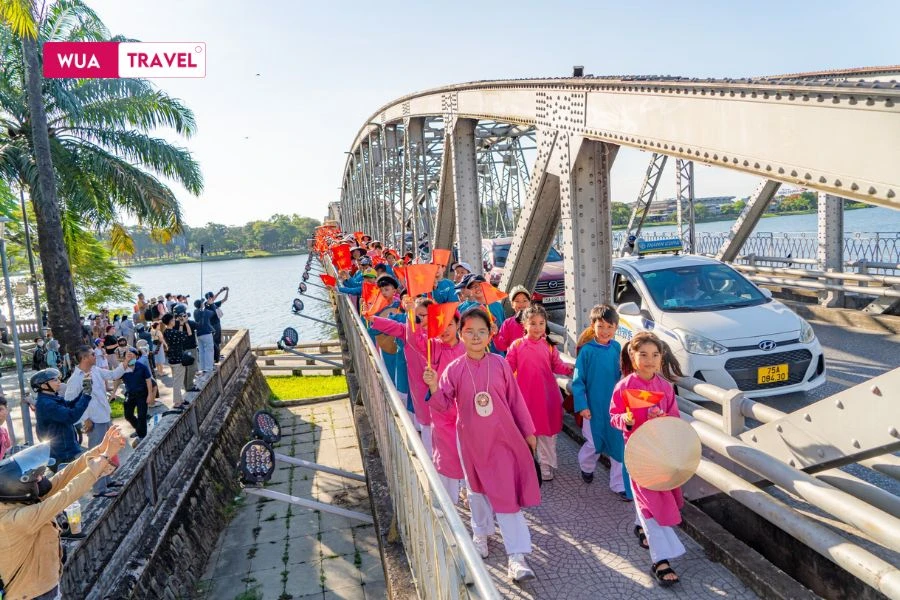
Hoi An On May days – gentle sunshine, blue An Bang beach – is where Quang always wants to return. In the afternoon, when the sunlight begins to tilt, I cycle through the rice fields on the edge of the village, where there is the smell of drying straw and the sound of ducks quacking by the village pond. At night, lanterns light up the old town, sparkling like a fairy tale dream.
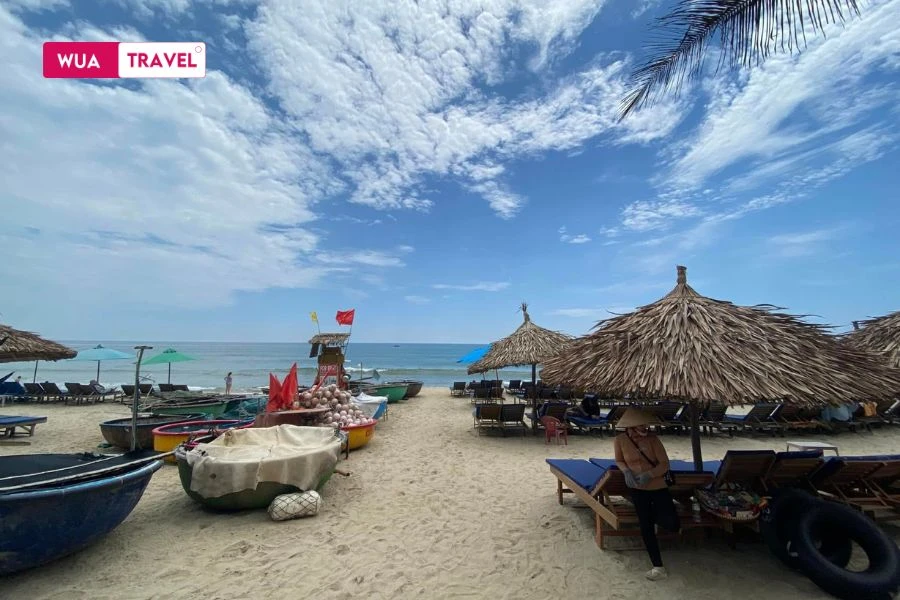
Stormy season (September–November) in the Central region can be quite inconvenient – roads are flooded, many places are closed. On a trip in October, Quang had to take shelter from the rain for nearly 2 days in Da Nang, and although he still found memorable moments, I always recommend choosing the dry season to fully experience the beauty of this land.
South – Tropical all year round, more sunshine than rain
In short: The South is most ideal from December to April, when the weather is dry and sunny, suitable for enjoying the vibrant life of Saigon or relaxing in Phu Quoc.
Should avoid: May–August (short, non-persistent rains)
The South has no winter, instead there are two main seasons: dry season and rainy season. The climate characteristics make this place always maintain its freshness and vibrancy – whether in bustling Ho Chi Minh City or the peaceful West.
Phu Quoc in january makes me feel like I am in a small paradise. The sea is blue, the sky is clear, and the basket boats are floating on the waves. I spend the whole day diving to see the coral, then sit and eat grilled seafood on the sand, where the sea breeze whispers like a lullaby to the faraway traveler.
LIVE Saigon, from December to March, the weather is cool, ideal for walking around the streets, drinking coffee, or exploring small alleys filled with flavors from all over the country. Although Saigon never sleeps at night, I still love the dawn on Nhieu Loc canal the most – when the city begins to slowly change.
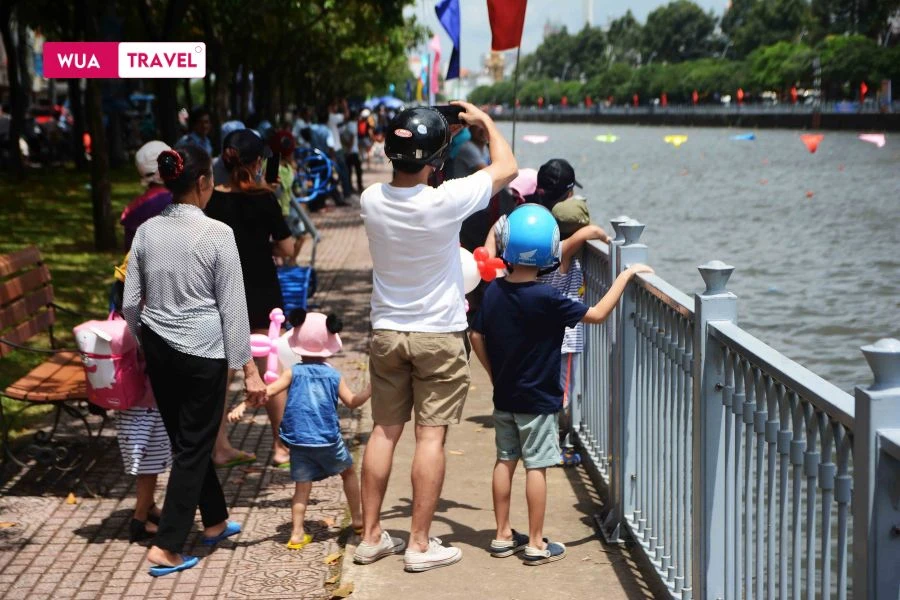
Rainy season (May–August) is not too scary – usually just sudden showers, which come and go quickly. Once I was “stuck” under the awning of a coffee shop in Can Tho, watching people rushing to escape the rain, listening to the sound of rain hitting the corrugated iron roof and inhaling the smell of damp earth after a storm – it turned out to be a very Vietnamese experience, very memorable.
Best Time to Visit Vietnam by Season
In short: Spring (March–April) and Autumn (September–November) is the best time to explore Vietnam seasonally. The weather is mild, with little rain, the nature is brilliant and very suitable for exploring diverse regions – from the mountains of the Northwest to the blue sea of the Central region.
Vietnam has not only four seasons – but perhaps hundreds of shades of time, moving with each land. Whether you like the gentle blooming season or the hot sunny days but the turquoise sea, surely in the four seasons, there is a season born for you. Quang has experienced all of them – and each time there is a different Vietnam waiting for him ahead.
Spring (March – April):
Spring in Vietnam is not too bright or flashy. It is gentle, like a thin layer of mist covering the moss-covered tiled roofs of Hoi An ancient town, or the rice fields of Ninh Binh turning green.
The North in spring is like wearing a new coat – Moc Chau colorful flowers Ha Giang shy peach blossoms bloom late, still Hanoi. Then the scent of milk flowers began to waft through the long streets.
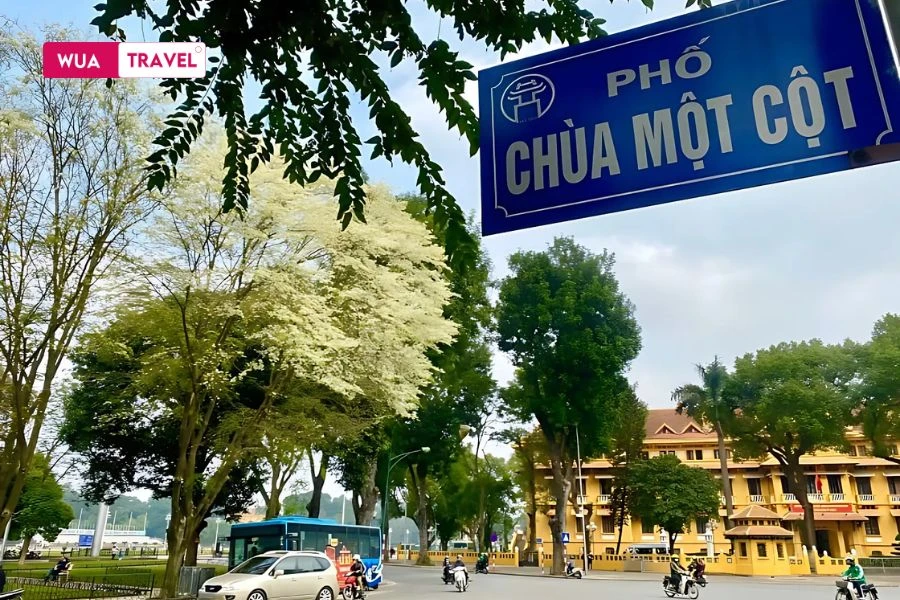
In the Central region, Hue This season is strangely peaceful – no longer the damp cold of winter, not yet the harsh sun of summer. You can sit on a boat along the Perfume River, listen to a Nam Ai folk song, or wander around the mausoleums when the sky is still lightly misty.
The South is still dry and pleasant – Dalat Spring is a dream. Early morning coffee, crisp air, and yellow mimosa flowers blooming all over the walkways.
Suggested destinations: Hanoi, Ninh Binh, Moc Chau, Hue, Da Lat, Phu Quoc
Summer (May – August)
Summer is the season of light, of the sea and of unscheduled trips. Quang remembers the first time he came here. Ly Son in June – the sea is so blue that it seems like there is no boundary between sky and water, and fresh seafood is grilled right after being pulled out of the net on a charcoal stove.
Central Vietnam is a summer paradise: Hoi An sparkling lanterns every night, Da nang vibrant with fireworks festival, Nha Trang – where you can snorkel and see coral in crystal clear water. Don’t miss it. Quy Nhon good Phu Yen – two rough gems gradually revealing their true beauty.
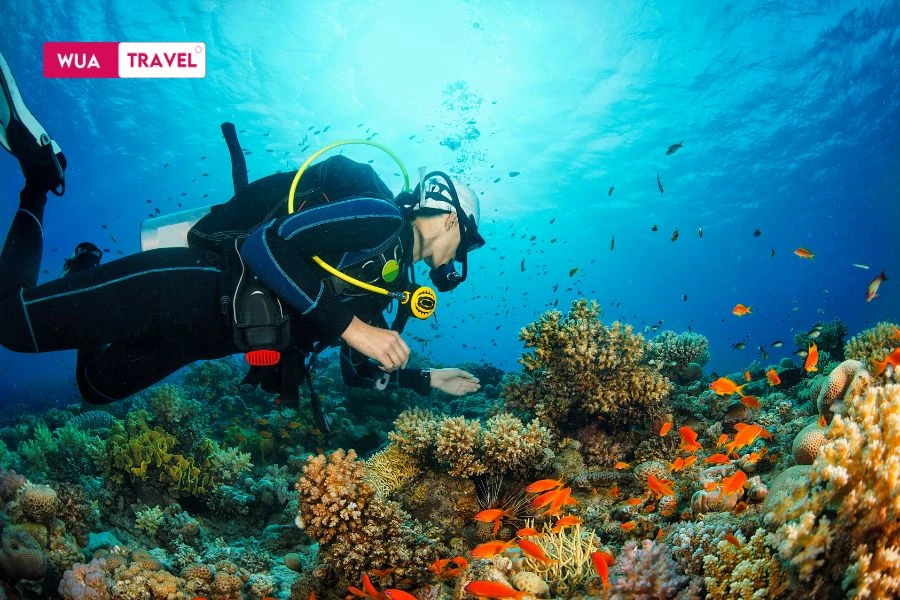
The North is starting to get hot, but you can still escape the heat in highlands like Sapa, Moc Chau, or cycle through lotus fields Tam Coc.
The South may have showers, but they usually come and go quickly – enough to cool the air and cool the summer sun.
Suggested destinations: Ly Son, Hoi An, Da Nang, Nha Trang, Phu Yen, Quy Nhon, Tam Coc, Sapa
Autumn (September – November)
If he could choose just one season to bring international friends to Vietnam, Quang would not hesitate to choose autumn. The sky is clear, the wind is light, the air is like a layer of honey covering the landscape.
North this season beautiful to the heart: Mu Cang Chai, And you, Hoang Su Phi Entering the ripe rice season. The golden terraced fields, sparkling in the afternoon sun, and the sound of harvesting rice mixed with the laughter of the local people – that is the most beautiful Vietnam in my eyes.
Hanoi Autumn is gentle and nostalgic – like an old love song. Walking around Hoan Kiem Lake in the early morning, watching the leaves fall silently, smelling the scent of new rice, drinking egg coffee at a small shop on the second floor overlooking the street – is the best way to understand why people love Hanoi.
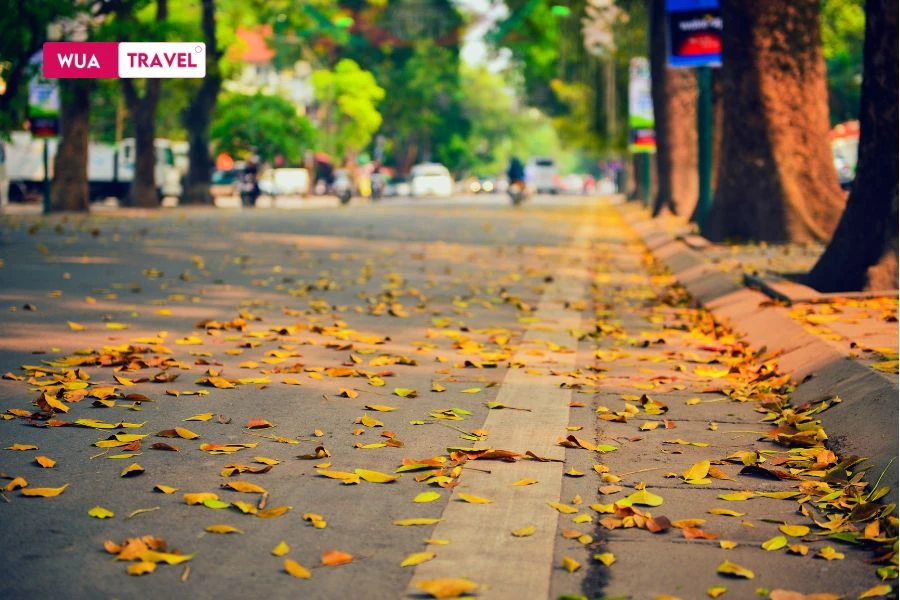
The Central region is less sunny, suitable for trekking Hai Van pass, visit Phong Nha explore caves, or wander Hoi An low tourist season. However, keep an eye on the weather as this season can have small late season storms along the coast.
Suggested destinations: Mu Cang Chai, Y Ty, Hoang Su Phi, Hanoi, Hoi An, Phong Nha
Winter (December – February)
Winter comes, the North starts to get cold – some places are very cold, very cold. But that is also the time, Ha Giang, Dong Van immersed in thick fog, creating a surreal beauty. If you are lucky, you can see snow covering the mountain slopes in white. Fansipan or frost covers the young peach branches.
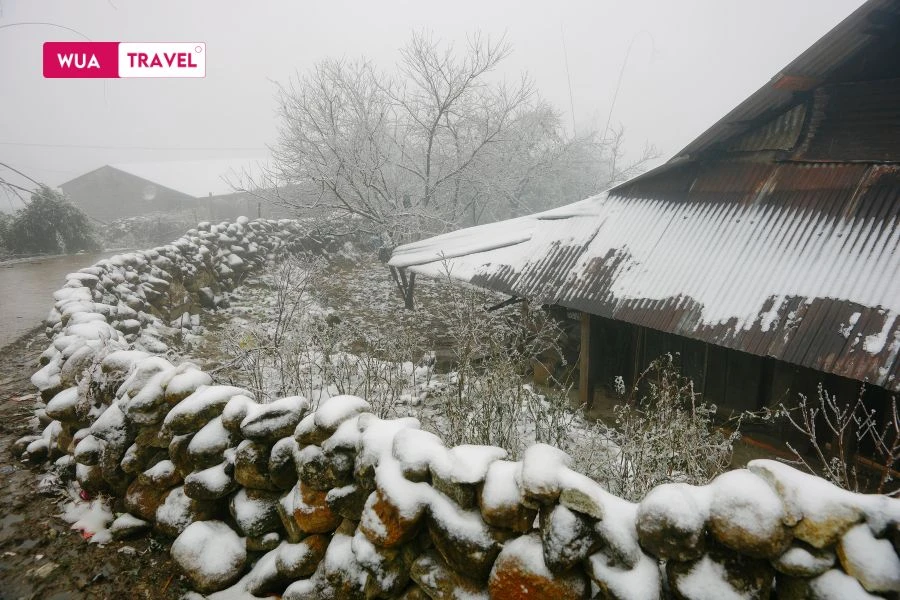
In the Central region, Da nang and Hue It can be gloomy, with occasional drizzle – but if you time it right, you can still enjoy the characteristic quiet and ancient atmosphere.
The South is completely different – sunny, no rain, very pleasant. Quang once celebrated Tet there. Phu Quoc, in the morning riding a motorbike along Sao beach, in the afternoon sitting and eating fish hotpot in Duong Dong fishing village. The atmosphere of Tet in the South is friendly, bustling, but still gentle and full of memories.
Suggested destinations: Sapa, Ha Giang, Dong Van, Phu Quoc, Can Tho, Saigon
Best Time to Visit Vietnam by Month
Vietnam stretches from North to South, each month of the year brings a distinct color to each region. Depending on the time you have at hand, each month is an opportunity for you to explore a unique Vietnam. Here is a detailed guide to help you choose the most suitable month to travel to Vietnam:
January – Cool in the North, Dry in the South
January in Vietnam is the time for you to experience Vietnam in the chilly days of the Northern winter. If you come to Hanoi, the air at this time is wonderful. The cold is gentle, not too harsh, but enough to feel the breath of winter. In the early morning, I often walk around Hoan Kiem Lake, where the fog covers the landscape, covering it with a layer of mist. With just a light warm coat, I can enjoy the fresh air of the first days of the year. The sound of the wind rustling through the trees, the sound of hot tea being poured from small shops on the roadside, creates a peaceful, pleasant space.
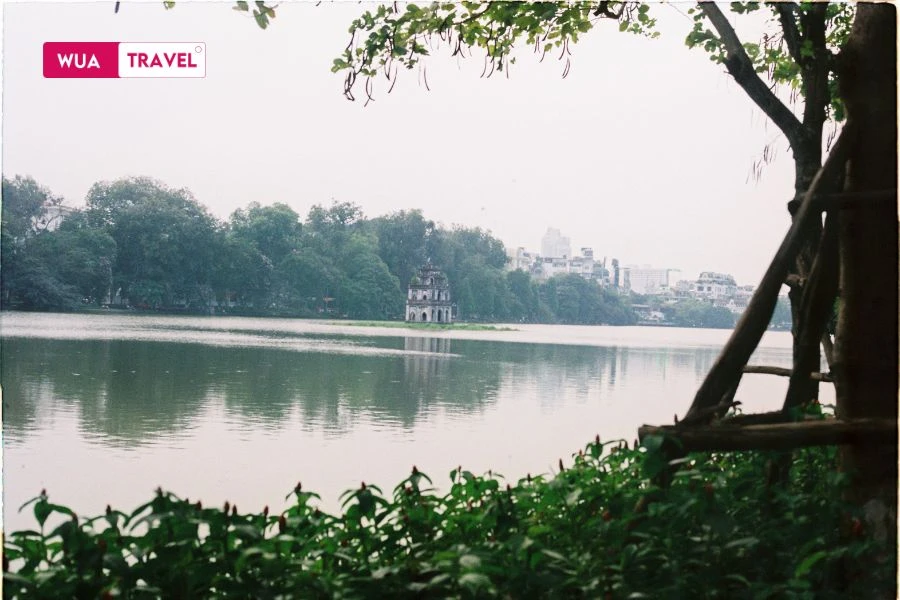
The highlight of Hanoi in January is the blooming peach blossoms, especially during the Lunar New Year. You can find ancient peach trees displayed at intersections, or in suburban flower villages where people prepare for Tet. The gentle scent of peach blossoms wafts through, bringing a very familiar and cozy feeling.
Walking around the old town, I stopped at a small coffee shop to enjoy a cup of hot egg coffee – a specialty of Hanoi on cold days. The Tet atmosphere in Hanoi is truly different, not only the festive atmosphere but also the stories and laughter of the people here.
In the South, January brings a completely different atmosphere. At this time, Phu Quoc is an ideal destination to escape the cold of the North. The clear blue sea, fresh air, and smooth white sand beaches are ideal for beach trips.
Every morning, I often wake up early to go to the beach to watch the sunrise, immersing myself in the cool water. In the afternoon, I sit at a beachside restaurant, enjoy a glass of fresh coconut juice, watching the sun gradually disappear behind the green mountains. There is nothing more wonderful than relaxing in the quiet, vast space of the ocean on these January days.
Suggested destinations: Hanoi, Sapa, Phu Quoc, Can Tho
Tip: If you want to feel the Tet atmosphere, Hanoi at this time is wonderful with the festive atmosphere, blooming peach blossoms and traditional dishes such as banh chung and banh tet.
February – Tet Holiday, Spring Blossoms
February is the most important time of the year for Vietnamese people, when Lunar New Year takes place. This is the biggest holiday, and the Tet atmosphere covers all parts of the country. In the North, February has a distinct spring atmosphere, with cold weather gradually giving way to warmer days towards the end of the month. In the South, February is the dry season, favorable for beach trips. However, it should be noted that during Tet, many shops, restaurants and tourist services will be closed or have limited operations because people are on Tet holiday.
Although February has many attractive destinations, for me, Hanoi and Hoi An are always the two places that bring the most special emotions during Tet. In Hanoi, every morning, I walk around Hoan Kiem Lake, admire the peach blossoms in full bloom, and enjoy a cup of hot egg coffee at a small shop in the Old Quarter. The Tet atmosphere here is very special, a mixture of the tranquility of the land and the hustle and bustle of people preparing to welcome the New Year. I still remember clearly the feeling of sitting by the fire in a small restaurant, breathing in the cold air and enjoying banh chung and banh tet with the rich flavor of Tet.
Still Hoi An, on Tet holiday, this old town seems to be wearing a new coat with bright red lanterns. I spent evenings wandering on the small streets, the light from the lanterns reflecting on the surface of the Hoai River, creating an extremely magical scene. The laughter and voices of tourists and people in the old town made me clearly feel the festive atmosphere, where everything is filled with spring colors.
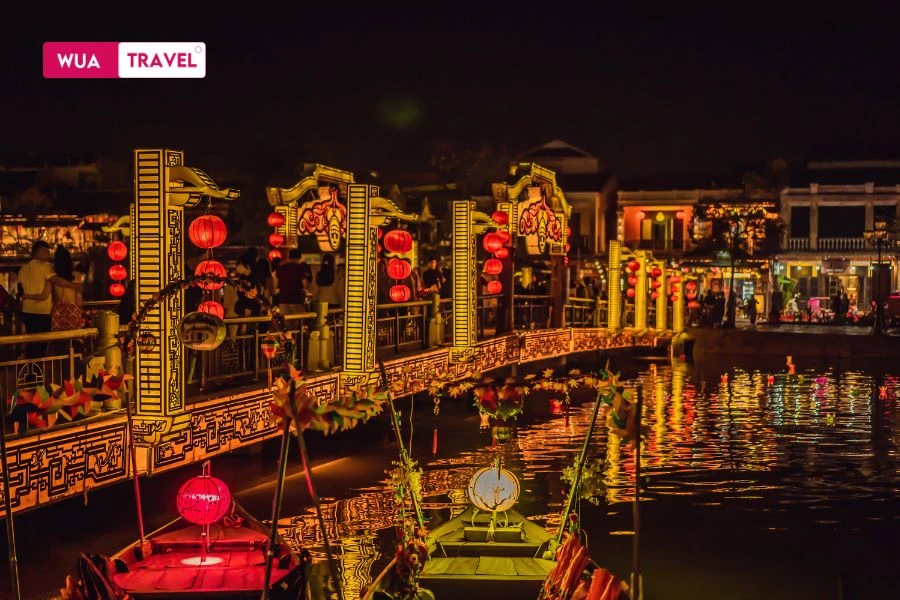
If you like the traditional Tet atmosphere, I recommend you visit Hue on this occasion. The first days of the year in Hue, with worship rituals, vibrant lion dances, or the sound of firecrackers, will help you clearly feel the Tet culture of the Vietnamese people. In Hue, in addition to the festive atmosphere, you can also enjoy special dishes of the Central region such as Hue beef noodle soup or mussel rice.
However, it should be noted that during Tet, most shops, restaurants, and tourist services will be closed for the holiday. So if you plan to participate in cultural activities,Be sure to plan ahead so you don’t miss out.
Suggested destinations: Hoi An, Hue, Hanoi
Tips: If you want to immerse yourself in the bustling Tet atmosphere, destinations such as Hanoi or Hoi An will be great choices. However, remember to check the holiday calendar and plan ahead to avoid encountering the situation of tourist service closures.
March – Ideal Weather Across the Country
March is one of the best months to travel to Vietnam. The weather at this time is ideal, with warm and pleasant climate in most areas. In the North, March is spring, the air is fresh and warm, no longer the biting cold of winter, but not yet the sweltering heat of summer. Spring flowers such as hoa ban and hoa sua begin to bloom, creating a fresh, vibrant space.
The Central region in March has no rain, the temperature is cool, suitable for outdoor activities and exploring the beaches. Meanwhile, the South also has a warm, sunny climate, but not too harsh, making beach trips or visiting river areas pleasant.
In Sapa, March is the ideal time to explore the lush green terraced fields. Spring here is very beautiful, the air is cool, not too cold, and there are light rains, making the scenery more fresh. One morning, I climbed to the top of the mountain, admiring the panoramic view of Sapa with the endless terraced fields, feeling so peaceful. I also took the opportunity to enjoy the specialty grilled salmon, eating while admiring the wonderful beauty of the mountains and forests.
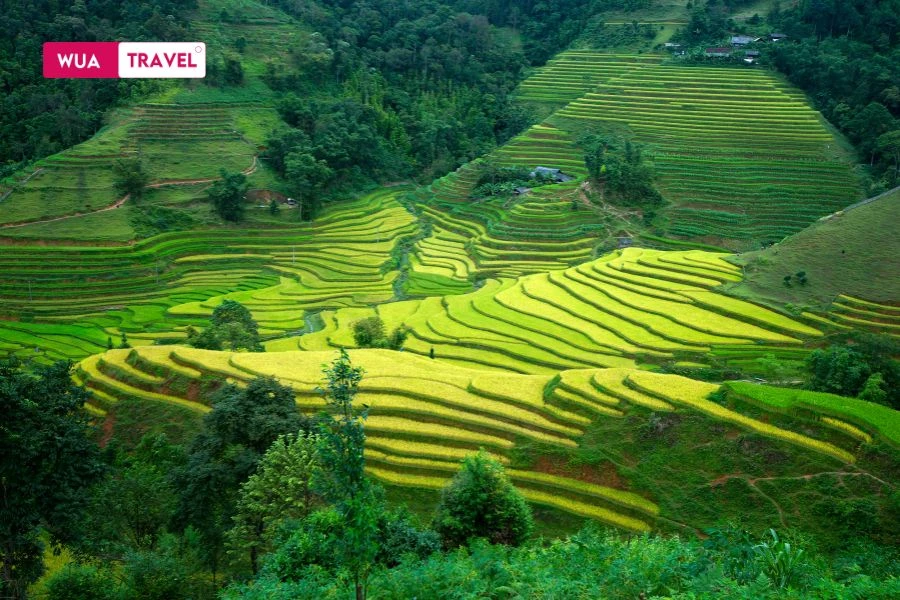
In Hoi An, March is not the peak season, so I can easily enjoy the peaceful beauty of the old town. The small streets with ancient houses, the colorful lanterns hanging everywhere create a romantic and quiet space. I still remember one evening, I sat in a small restaurant by the river, enjoying the famous Cao Lau dish of Hoi An, feeling the warmth of the space and the unique delicious taste of the dish.
Coming to Phu Quoc, March is the time when the sea is blue, the sun is warm, but not too hot. The beach here this month is very beautiful, the water is clear and the sand is smooth, ideal for those who love relaxation and water sports. Once, I joined a coral diving tour and was really surprised by the magical beauty under the sea. Phu Quoc in March is not too crowded, so I can enjoy the quiet, relaxing space.
Suggested destinations: Hanoi, Sapa, Hoi An, Phu Quoc, Mekong Delta
Tip: March is a great time to explore the northern and central regions, as the weather is dry and cool. If you love spring, visit Hanoi or Sapa. Hoi An and Phu Quoc are also great destinations for peaceful atmosphere and outdoor activities.
April – Dry, warm, festive season in Hue
April comes, the spring atmosphere still lingers throughout the regions of Vietnam, bringing a warm and fresh feeling. Whether it is the North, Central or South, each place has its own unique beauty, strangely charming. If you come to Hanoi in April, you will feel the gentleness of spring. Early in the morning, I like to walk around Hoan Kiem Lake, when the lake surface is still misty, the fresh air makes every step seem lighter. The peach and apricot blossoms are blooming brightly, and the atmosphere preparing for Tet makes Hanoi at this time full of beauty and peace.
However, April is also the time when big festivals take place, especially the Hue Festival. When I came to Hue at this time, the whole city seemed to come alive with sound, light and graceful ao dai. Every corner of the old town, every monument became more vibrant than ever, attracting me with its ancient beauty mixed with modernity. The feeling of sitting on a dragon boat, listening to Hue folk songs on the Perfume River in a romantic space, it is difficult to describe all the beauty of this land.
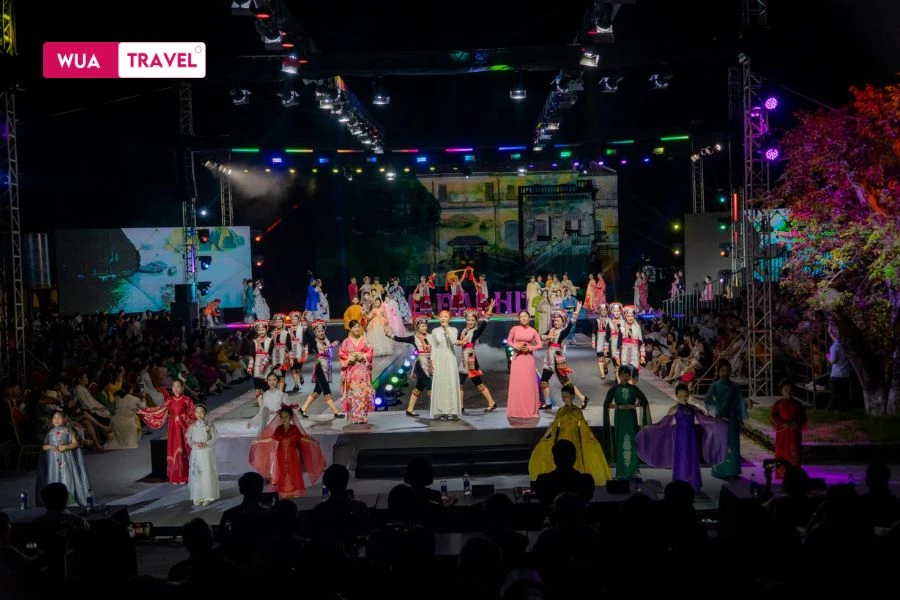
In the South, April is the dry season, an ideal time to visit Phu Quoc or the Mekong Delta. The long beaches, clear blue water, and peaceful village roads are truly a great destination to escape the hustle and bustle of the city.
I came to Hue for the first time during the Festival. The whole ancient city seemed to come alive with music, lights and Ao Dai on the streets along the Perfume River. At night, I sat on a dragon boat listening to Hue folk songs in the cool water, the red lanterns reflecting on the river surface. My heart at that moment seemed to slow down – because of the unique beauty of a land that is both quiet and full of life.
Suggested destinations: Hue, Da Nang, Hoi An, Nha Trang, Phu Quoc, Ninh Binh
Tip: If you want to experience the Hue Festival to the fullest, book your room 1–2 months in advance as this is peak season. Also, avoid major holidays if you don’t like crowds – mid-April is usually quieter and the weather is still very nice.
May –Start of summer, beaches warm up
May is the ideal time to explore Vietnam, when everything starts to turn into summer, with typical warm sunny weather, but not too hot, creating a pleasant atmosphere, especially in the South and Central regions. The North in May is still a bit cool in the early morning, but the air has started to warm up.
Famous tourist destinations such as Hanoi or Sapa are still attractive, especially the green tea hills and terraced fields of Sapa. The Central region with beaches like Quy Nhon, Nha Trang is ideal for outdoor activities, relaxing in the gentle sunlight. The South in May has entered the dry season, the golden sunshine spreads across the sand, like in Phu Quoc or Con Dao, is a great choice for vacation trips.
In Sapa, May is the rice planting season, with lush green terraced fields and fresh, cool air. One early morning, I climbed Fansipan peak to admire the beautiful scenery of clouds surrounding the mountains, feeling extremely peaceful. Lunch at a mountainside restaurant, enjoying delicious grilled salmon, made me love this land even more.
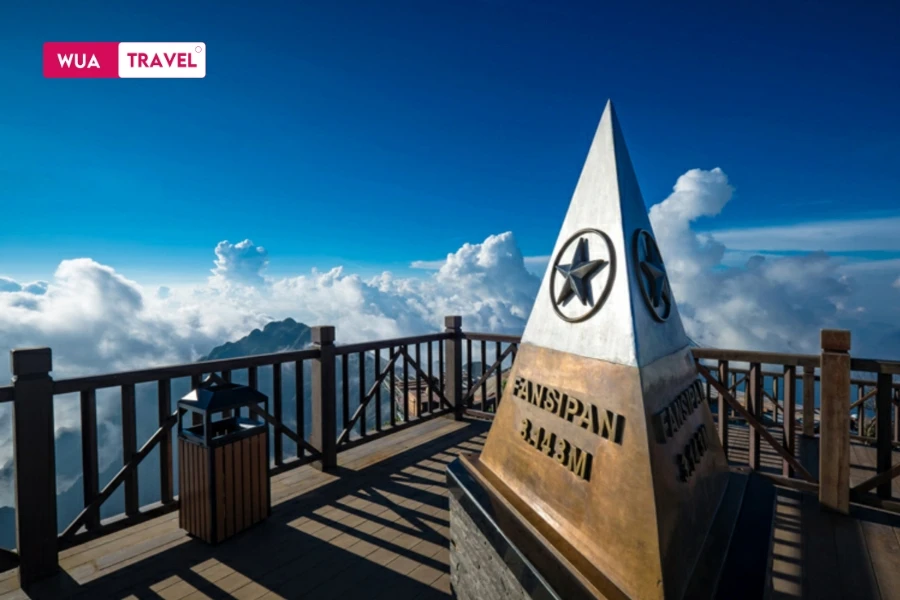
In the Central region, Quy Nhon and Nha Trang in May have ideal climate for sea tourism activities. The sea is clear, the waves are gentle, a great opportunity to participate in water sports activities, from diving to parasailing. I once immersed myself in the cool water of Nha Trang, feeling extremely relaxed.
In Phu Quoc, the blue sea, white sand and fresh air are the highlights of May. The sea water is crystal clear, I had a wonderful experience diving to see the coral, admiring the diverse and colorful marine ecosystem. Phu Quoc this month is not too crowded, so I can enjoy the quiet space, absolute relaxation.
Suggested destinations: Hanoi, Sapa, Quy Nhon, Nha Trang, Phu Quoc, Con Dao.
Tip: May is the ideal time to visit the North and Central regions, as the weather is dry and cool. If you love the cool air of summer, head to Sapa or Phu Quoc. Nha Trang and Quy Nhon are also great options for beach travel.
June: Hot Summer Days
June has arrived, bringing with it the brilliant early summer sunshine that covers every corner of the country. I often compare this month to an invitation to explore, when every scene seems more vibrant and energetic than ever.
If you come to the Central region in June, you will understand why people always praise the beauty of the beaches here. I visited Da Nang, where My Khe beach is blue under the golden sunlight. In the morning, I walked on the sand, feeling the waves lapping at my feet. In the afternoon, I chose to climb up to Son Tra peninsula, standing from Hai Van Quan looking down at the small city and the vast sea and sky, feeling like the whole world was in my sight.
June is also the season of tropical fruits, and I cannot resist their charm. Visiting a rural market in the West, savoring the rich sweetness of red lychees, inhaling the aroma of ripe mangosteens. Each piece of fruit seems to contain the sweetness and richness of the land and sky in June.
In the North, June is when the rice fields begin to turn green. I once visited Ninh Binh around this time and was fascinated by the boat ride on the Ngo Dong River, with green rice fields stretching out at the foot of towering limestone mountains on both sides. It was a natural picture that I will never forget.
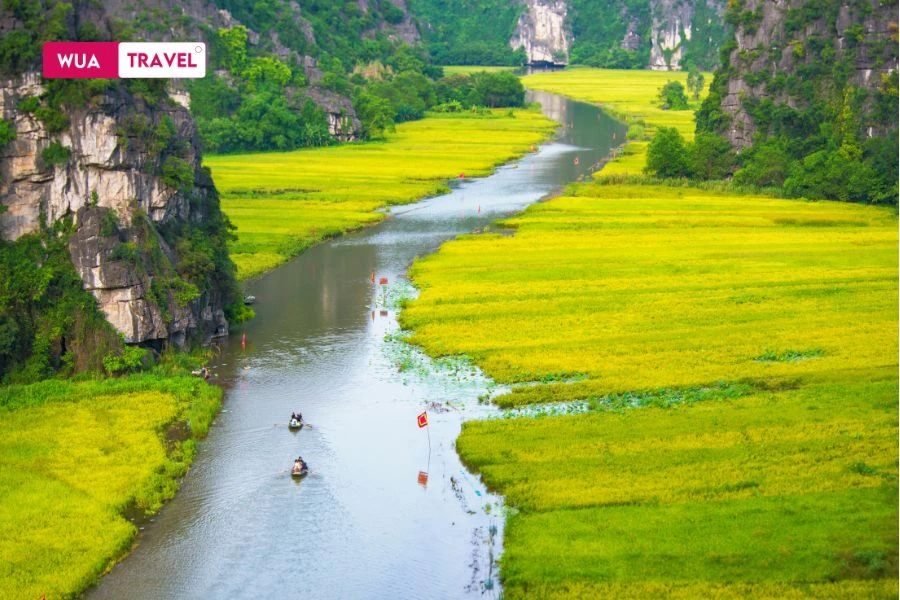
Suggested destinations: Da Nang, Nha Trang, Hoi An, Phu Quoc, Ninh Binh
Tips: Try watching the sunrise on the sea once, you will see the first moments of the day bring a very special feeling of peace. Don’t forget sunscreen and water, because the weather in June is quite hot!
July: Summer in full swing and Festivals full of life
July brings vibrant summer days across Vietnam, when the bright sunshine covers every road and the beach becomes the most favorite destination.
In the Central region, famous beaches such as My Khe (Da Nang), An Bang (Hoi An) or Eo Gio (Quy Nhon) are ideal choices to enjoy the clear blue sea water. I remember spending the whole afternoon at Eo Gio, sitting on the rocks, listening to the waves and watching the sunset dye the horizon red – an unforgettable scene.
Not only the sea, July is also the season of unique cultural festivals. In Hue, the Cau Ngu festival was a memorable experience, where I was immersed in the vibrant atmosphere of lucky rituals at sea. The feeling of standing among the crowd, watching the vibrant colors of the festival made me love Vietnamese traditional culture even more.
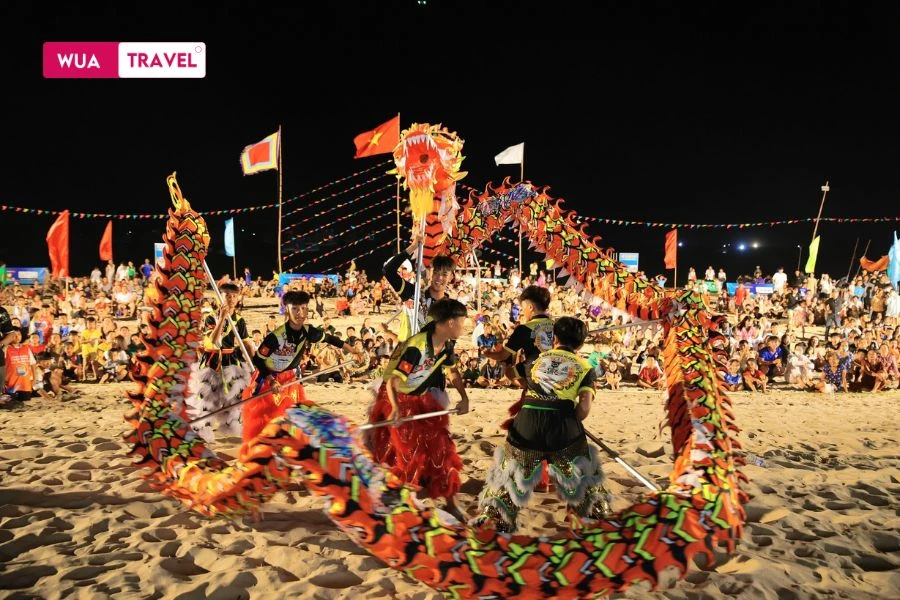
The North in July brings fresh and cool air in highland destinations such as Tam Dao or Sa Pa. Waking up one morning in Tam Dao, I sat sipping coffee in the mist and enjoying the cool air. It was a peaceful moment that I could not find in the noisy city.
In the West, July is the season of ripe fruit. Fruit gardens in Tien Giang and Can Tho are full of mangoes, rambutans, and durians – sweet gifts from nature. The first time I visited Cai Rang floating market in July, it was a great feeling to enjoy a cup of coffee on a boat, amidst the laughter of the vendors and the vibrant colors of the fruits.
Suggested destinations: Da Nang, Hoi An, Hue, Tam Dao, Can Tho.
Tips: Choose early morning or late afternoon to visit outdoor places, avoid the harsh sunlight and enjoy more open space.
August: The Last Days of Summer Are Gentle
August is the time when the summer heat begins to ease, the air becomes more pleasant, bringing a feeling of relaxation after the hot summer days. This is also the right time to combine beach vacations with exploring culture and nature.
In the Central region, the beaches are still clear, but not as hot as last month. Return to Hoi An in August, when the ancient town still retains its characteristic peace, not too crowded. Stroll around the small streets, admire the colorful lanterns and enjoy Cao Lau, a unique blend of tradition and modernity.
The North begins to transform with lush green rice fields, preparing for a bountiful autumn. Trekking in Mu Cang Chai in August, when the green terraced fields stretch out endlessly, creating a majestic natural landscape that will leave anyone in awe.
In the South, August is the fruit harvest season, but there are also light showers, making the air cooler and more pleasant. If you love exploring cuisine and culture, this is a great time to visit the West, experience the floating markets and local festivals.
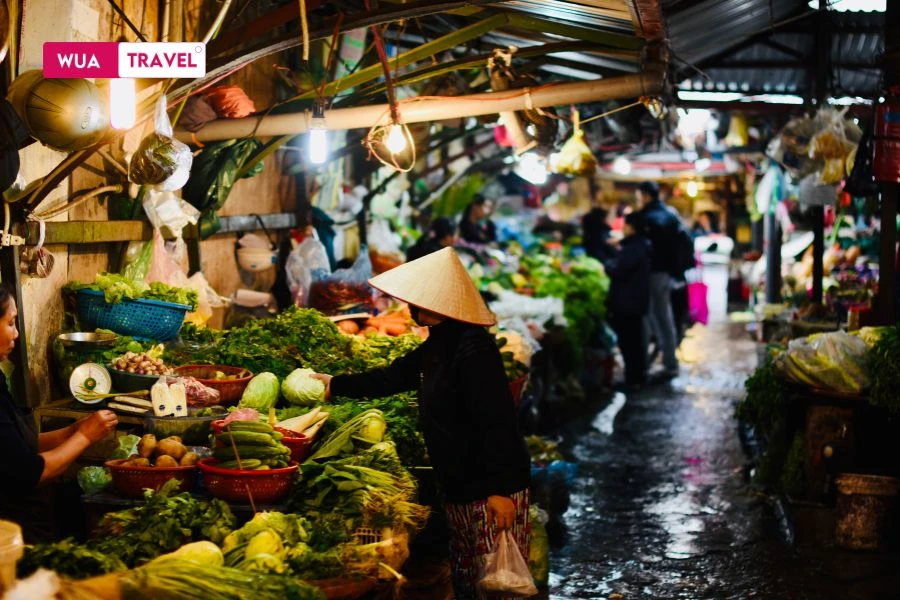
Suggested destinations: Hoi An, Mu Cang Chai, Hue, Can Tho, Phu Quoc.
Tips: August can still be rainy, so prepare a raincoat or umbrella when traveling to avoid trip interruptions. Coastal destinations at this time are often less crowded, very suitable for those who want to find a quiet space.
September – Autumn in north, rice harvest season
September is one of the best months to explore Vietnam, especially the North, when autumn begins to creep into every corner of the streets and fields. The weather this month is extremely pleasant, with cool and dry temperatures, creating ideal conditions for outdoor activities. The terraced fields in Sapa, Mu Cang Chai, Hoang Su Phi… are all in harvest season, creating a beautiful picture with the golden color of ripe rice. The image of local people rushing to harvest rice, their smiles, and the cool, fresh air make September an unforgettable month for anyone who loves nature and the peace of life.
In the Central region, September is a great time to visit ancient cities such as Hoi An, Da Nang, or visit Son Tra peninsula. The weather here is still a bit hot, but the rain has decreased, bringing a pleasant atmosphere for visitors. You can participate in outdoor activities such as visiting My Son relics, climbing Ngu Hanh Son mountain, or immersing yourself in the clear blue water of My Khe beach. If you love culture and history, Hoi An with its ancient houses and colorful lanterns at night is a destination not to be missed.
The South in September still retains its own beauty with warm sunshine, not too much rain and usually only a few hours a day. Phu Quoc is still one of the ideal destinations for beach holidays with clear blue water, smooth white sand and water sports activities such as diving to see coral, kayaking. The Mekong Delta is also very suitable for those who love to explore the scenery of the West with rice fields, floating markets and cool green canals.
Once I came to Sapa in September, I witnessed the scene of terraced fields of golden rice under the sunlight. The air at that time was extremely pleasant, I wandered around the villages and felt the peace here. One early morning, I sat on the edge of the field, listening to the wind blowing through the rice fields, watching the farmers harvesting rice. After a tiring day of trekking, I enjoyed a dish of mustard green soup cooked with local pork – a dish rich in the flavor of the mountains and forests, making me feel the full beauty of nature and people here.
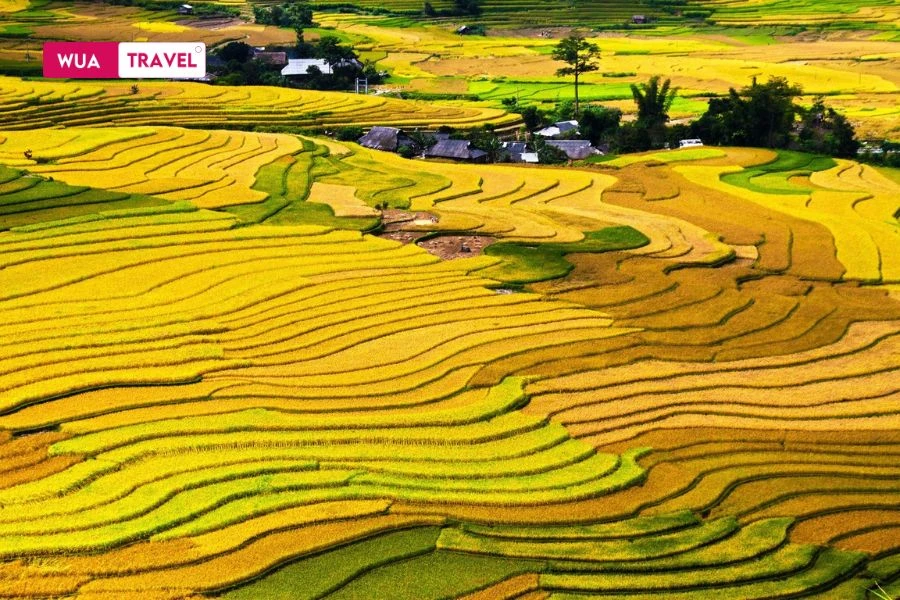
Suggested destinations: Sapa, Mu Cang Chai, Hoi An, Da Nang, Phu Quoc, Mekong Delta.
Tips: September is the ideal time to visit Sapa or Mu Cang Chai if you want to see the golden terraced fields in the harvest season. To enjoy the cool air and explore the cultural heritage, Hoi An and Da Nang are great choices. If you like to relax and swim, Phu Quoc or the Mekong Delta are ideal destinations.
October– Autumn in north, rice harvest season
October is the ideal time to explore the beauty of Vietnam, when the weather becomes cool and pleasant throughout the country. The North enters autumn with clear blue skies, mild sunshine and chilly air, creating perfect conditions for outdoor activities such as hiking, climbing and exploring the highlands. In particular, areas such as Ha Giang, Mu Cang Chai and Sapa become brilliant with golden terraced fields, attracting tourists to admire and take photos.
Central region: The weather is changing seasons, with light rain scattered but still favorable for exploration. Hoi An is quieter at this time, the ancient town is beautiful and quiet in the lantern lights and small alleys with few visitors. Hue still retains its ancient features, the autumn rain makes the city more dreamy. If you are lucky enough to avoid the rain, this is the ideal time to take a walk, enjoy the cuisine and learn about the culture of the ancient capital.
Southern region: The weather gradually changes to the dry season. The sky is clear, the sun is light, and there is less rain. Phu Quoc begins its beautiful season, with clear blue seas and a peaceful atmosphere. The West enters the flood season, with particularly attractive scenery: lush green Tra Su cajuput forest, bustling floating markets, and flooded fields creating a very unique scene. This is a great opportunity to explore the life of the river and the wild nature.
I once wandered Ha Giang in late October. In those days, the rocky plateau was covered with a thin layer of mist, and the mountain slopes were brilliant with pale pink buckwheat flowers. I stood in the middle of the rocky field, took a deep breath of the cool air, and felt a strange silence. Every bend on the Happiness Road was a painting, and every highland market was a story I could never forget.
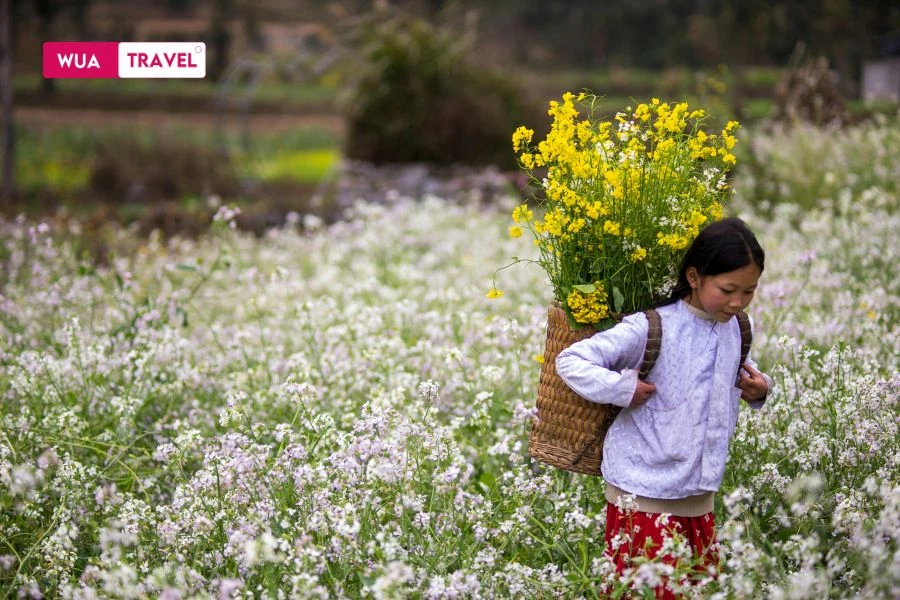
Suggested destinations: Ha Giang, Mu Cang Chai, Sapa, Hue, Hoi An, An Giang
Tips: If you are a photography enthusiast, don’t miss the rice harvest season in the northern mountains in early – mid-month. Bring a light jacket when going to the highlands, and check the local festival calendar or the mountain passes in advance (some places have thick morning fog). In the West, the flood season is at its best this month – remember to try specialties such as linh fish hotpot with sesban flowers or Chau Doc fish noodles.
November – Cool, dry, photogenic landscapes
November is a great time to explore Northern Vietnam, especially places like Sapa and Ha Giang, when the weather is quite cool and pleasant. At this time, autumn is at its peak, the air is fresh, not too cold, not too hot, creating favorable conditions for trekking, sightseeing and photography.
This is also the time when the rice fields have been harvested, bringing a golden landscape, especially in areas such as Sapa, Mu Cang Chai or Hoang Su Phi. The golden ripe terraced fields create a beautiful, enchanting scene. If you love nature and want to experience a peaceful space, November is the ideal time to come here.
Although it is autumn, the weather in the North is still quite mild, not too cold like in winter, making the trip more pleasant. Activities such as trekking, visiting villages, taking photos or simply enjoying the scenery are all ideal during these days.
November is also the time to explore the unique cultural features of the highlands, such as participating in highland markets, enjoying specialties such as thang co or sticky rice.
However, a small note for you is that although this is a beautiful season to travel to the North, you should still prepare yourself for the weather that can be cold in the early morning and late evening, especially in high areas like Sapa. Bring warm clothes to ensure your health throughout the trip.
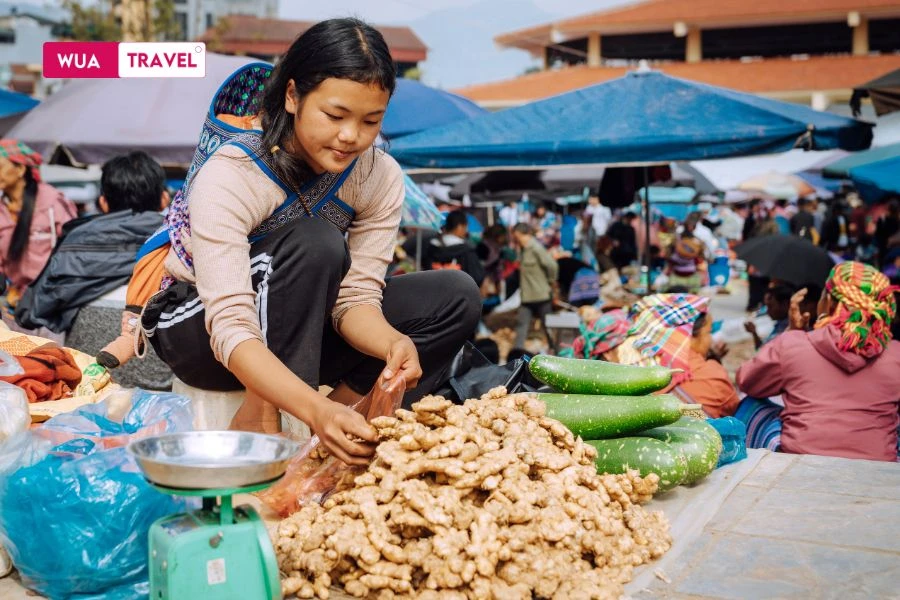
Suggested destinations: Ha Giang, Mu Cang Chai, Sapa
Tip: If you want to avoid the crowds and enjoy the peaceful atmosphere, plan your trip in mid-November. At this time, tourist destinations in the North are less crowded than at the end of the month, when more tours start to appear.
December – Great trekking weather
December is the transitional time between the old year and the new year, when the weather across Vietnam has interesting contrasts: the North starts to get cold, the Central region is sunny and dry, and the South is dry and warm – ideal for all types of tourism.
LIVE north, the cold of December makes the air fresher and more romantic. The sunny days with clear blue sky are the ideal time to explore Hanoi, Sapa, Moc Chau or Ha Giang. However, the temperature at night can drop quite low, especially in the highlands, so if you intend to trek or relax here, don’t forget to prepare warm clothes carefully.
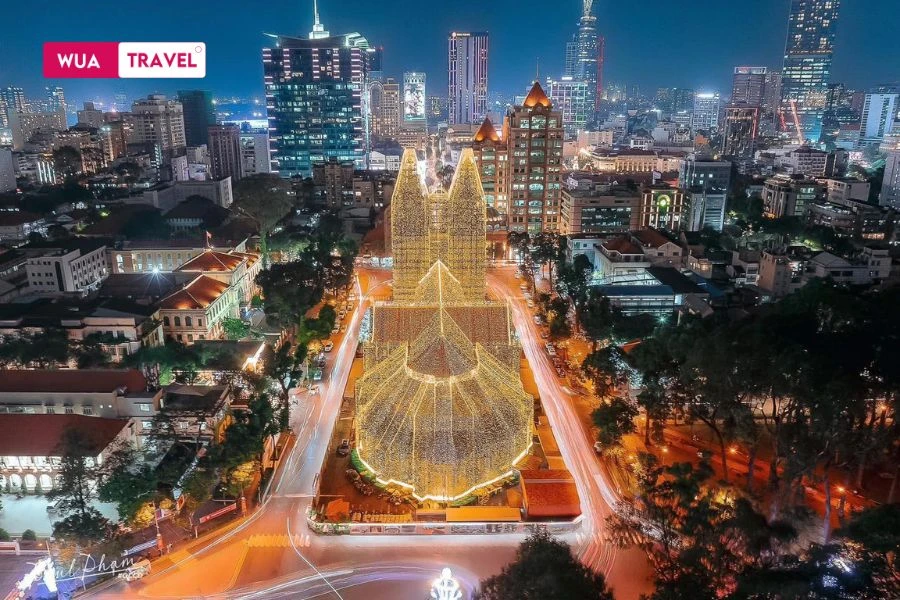
Central region The rainy season has passed, the weather is gradually stabilizing, the sun is returning to destinations such as Hoi An, Hue, Da Nang and Nha Trang. This is the ideal time to stroll around the old town, explore cultural heritages without worrying about the weather.
Meanwhile, southern Entering the dry season again, the weather is pleasant, with light sunshine and very little rain. Famous tourist destinations such as Phu Quoc, Can Tho, Vung Tau or Ho Chi Minh City become more bustling as the year-end holiday season approaches. In particular, Christmas and the end of the year in big cities are often splendidly decorated, very suitable for those who want to feel the bustling and modern atmosphere.
Suggested destinations for December: Sapa, Moc Chau, Ha Giang, Hoi An, Da Nang, Hue, Nha Trang, Phu Quoc, Can Tho, Ho Chi Minh City.
Tips: December is the peak tourist season, especially around Christmas and the end of the year. If you want to enjoy your trip without too many crowds, go early in the month – the weather is nice and prices have not increased much yet.
Best Time to Visit Vietnam by Destination
Ideal time to explore popular destinations such as Hanoi, Sapa, Ha Long Bay, Nha Trang, Dalat and Phu Quoc Vietnam usually falls in the range September to April All have pleasant weather. The North, especially Hanoi and Sapa, is most beautiful in autumn and early winter with cool, fresh air. Ha Long Bay is also a great choice for cruises in the dry season. Nha Trang and Phu Quoc are suitable for beach holidays, while Da Lat is cool all year round, but is most beautiful from December to March. This is the right time to enjoy the wonderful beauty of this country.
Best time to visit Hanoi
Autumn in Hanoi is the most beautiful time of the year – when the weather is mild, the air is fresh, and the whole city seems to be wearing a romantic yellow coat. The small streets are covered with fallen leaves, the morning sunlight is as soft as honey, and the afternoon is just chilly enough to make you feel comfortable when walking through every corner of the old town.
I once had the chance to experience a full autumn here. Every early morning, I liked to stroll around Hoan Kiem Lake, stop at a small cafe on Cau Go Street, order a cup of hot egg coffee, and quietly watch the trees changing leaves. Everything at that time was so peaceful – as if Hanoi was whispering an old story, slowly but full of love.
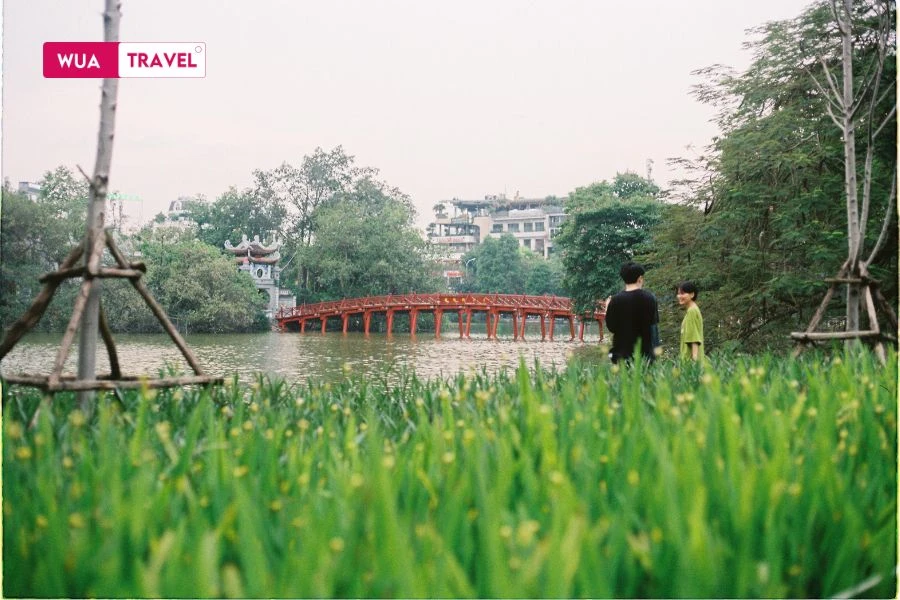
The weather from September to November is very pleasant, with temperatures ranging from 20–25°C. The days are mild and sunny; the evenings start to get chilly – enough to make you want to put on a jacket but still want to go out for a walk. This is also the ideal time to explore destinations such as Hoan Kiem Lake, the Temple of Literature, the One Pillar Pagoda or simply sit on the sidewalk and eat a hot bowl of pho in the chilly weather.
If you love quiet spaces, gentle and profound beauty, then Hanoi autumn is definitely an experience not to be missed.
Tips: Start your day early when the streets are quiet and the light is at its softest. And don’t forget to pack a light jacket – it can get chilly in the afternoon.
Best time to visit Sapa
From September to November, Sapa enters the most beautiful time of the year. The weather is mild, no longer the harsh sun of summer and not yet the bitter cold of winter. The temperature ranges from 15-22°C, the weather is dry, with light sunshine during the day and a chill in the early morning or late afternoon, ideal for trekking or walking through the mountain roads.
This is also the time when the terraced fields enter harvest season, dyeing the entire valley yellow. In Ta Van, Lao Chai, Muong Hoa or Hoang Lien Son, the yellow color mixed with the early morning mist creates a scene that is both peaceful and splendid. If you come in late autumn, you can also see the forests starting to change color, very suitable for taking photos and sightseeing.
Sapa is not only beautiful, but also has a deep culture. You can visit Cat Cat village to explore the life of the H’mong people, climb Ham Rong mountain to take in the panoramic view of the town hidden in the clouds, or go to the top of Fansipan by cable car to hunt for clouds – feeling like standing on a vast “white sea” in the sky.
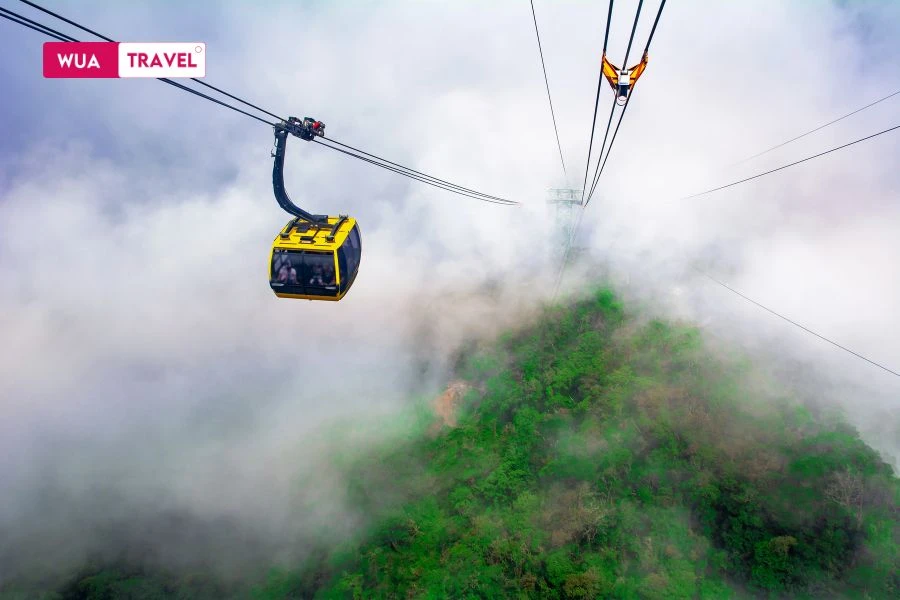
Don’t forget to visit Sapa night market on weekends – where the most typical features of the highlands are concentrated: brocade, apple wine, smoky grilled food, and the cheerful sounds of traditional panpipes and dances.
Tips: To catch the moment when the clouds drift over the mountain tops or among the misty valleys, get up very early – around 5:30 to 6:30 a.m. And remember to bring a warm jacket, a light scarf and good shoes – because the mountain roads can be slightly slippery if there is dew at night.
Good time to visit Ha Long
The best time to explore Ha Long Bay is from March to May, or in October. This is when the weather is cool, sunny, clear and with little rain – perfect for cruises, kayaking or simply enjoying the fresh sea air.
During this season, the temperature ranges from 22–28°C, the waves are calm, the weather is calm, making it easy to travel and visit majestic limestone caves such as Sung Sot Cave, Thien Cung Cave or Me Cung Cave. The gentle sunlight in the early morning or late afternoon makes the bay surface look like gold, reflecting the towering mountain ranges rising from the sea, creating a majestic and lyrical scene.
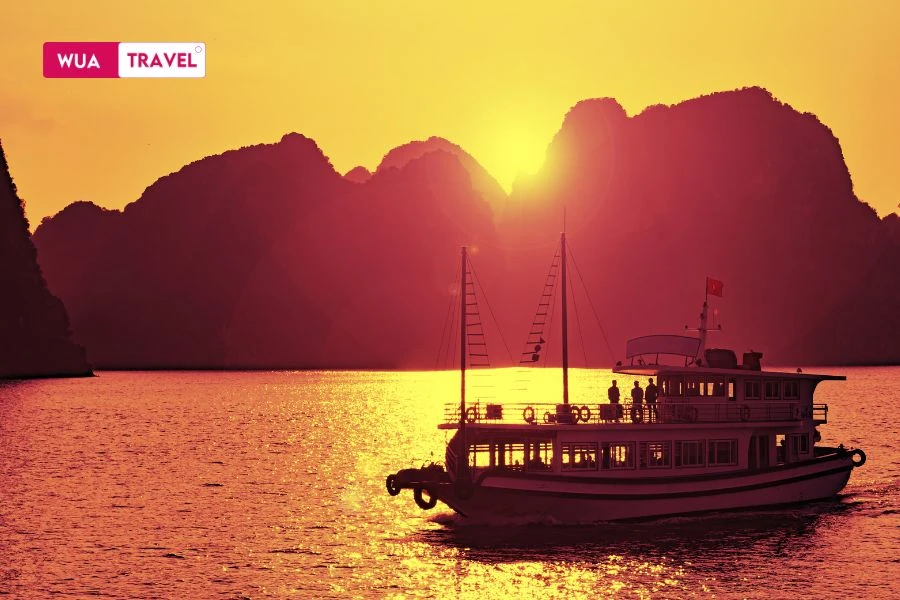
In addition, this time also avoids the heat of summer and the number of visitors is not as crowded as the peak tourist season, you can enjoy a quieter, more private space on night cruises – a very popular experience when coming to Ha Long.
If you love photography, bring your camera – because every corner of the bay, every moment of the day can bring a photo of a lifetime.
Tip: If you want to save money but still enjoy Ha Long to the fullest, you can choose to go on weekdays, avoiding weekends or holidays. Many cruise ships also have promotions for early booking, and you should choose a schedule to sleep overnight on the bay to experience the quiet beauty of the night and the sunrise on the sea.
Best time to visit Hoi An
The ideal time to travel to Hoi An is from February to April, when the weather is dry and cool, with temperatures ranging from 24-30°C. This is the time when the air is most pleasant for you to leisurely explore the old town, wander through small alleys, admire ancient houses, or sit and enjoy specialties right at sidewalk restaurants.
The dry season not only makes outdoor activities more comfortable but is also the best time to admire Hoi An with its ancient beauty. Especially in the evening, when colorful lanterns shine brightly on the streets, the space becomes mysterious and romantic, an experience that visitors cannot miss.
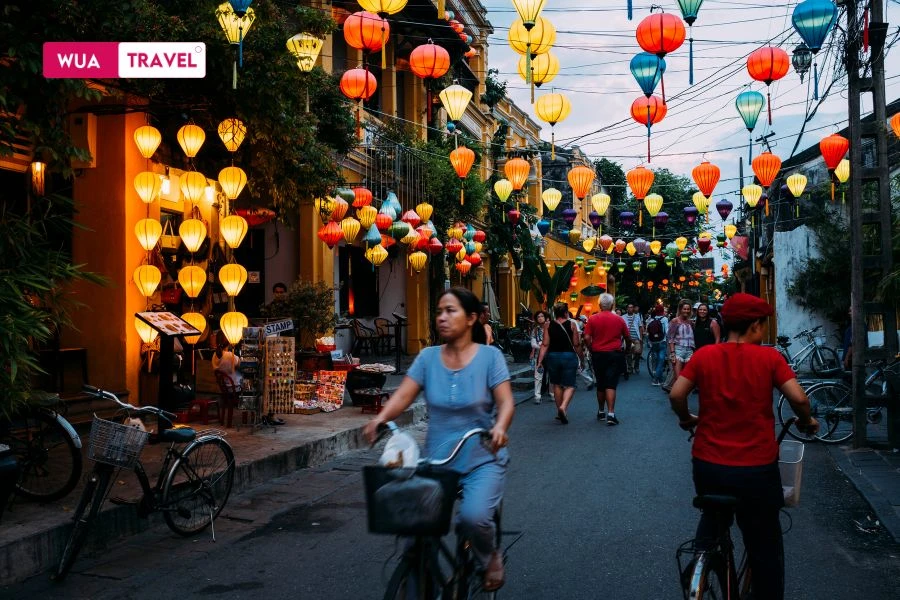
In addition, if you love the sea, Hoi An also has beautiful beaches such as Cua Dai or An Bang, where you can relax in the golden sunshine or participate in sea sports activities.
Tip: Don’t miss the Lantern Festival every full moon night. This is an opportunity for you to witness Hoi An sparkling in colorful lanterns, and you can participate in releasing flower lanterns on the Hoai River, bringing a peaceful and romantic feeling.
Best time to visit Nha Trang
The ideal time to travel to Nha Trang is from March to August, when the weather is dry and warm, with temperatures ranging from 25-33°C. This is when Nha Trang’s sea is clear and calm, ideal for swimming, diving and water sports. You can spend the whole day immersing yourself in the cool water, exploring the long white sand beaches, or taking part in coral diving tours.
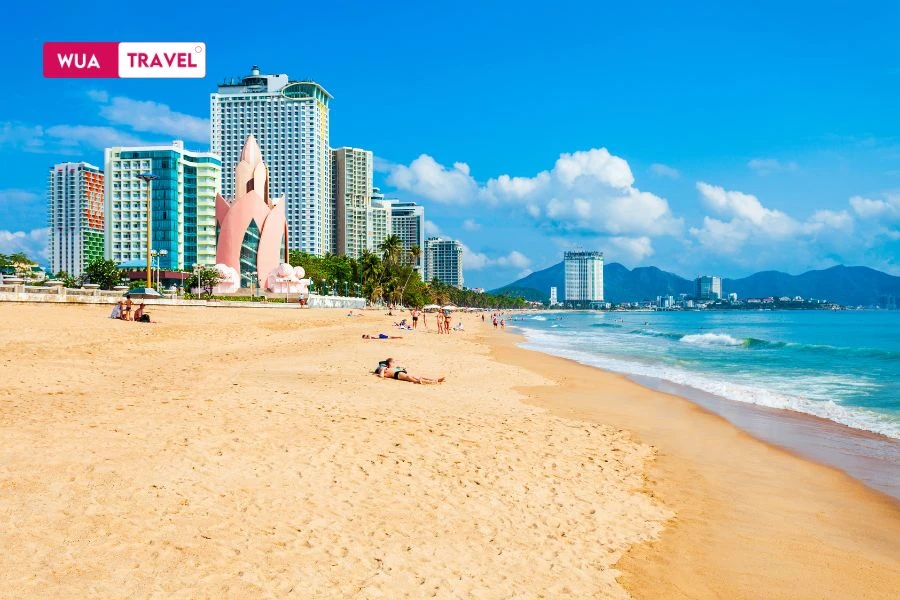
The dry season not only brings a pleasant atmosphere but is also the perfect time to explore the beauty of the islands surrounding Nha Trang, such as Hon Mun, Hon Tam, or Hon Chong. Each island has its own unique features, from crystal clear waters to pristine sandy beaches. You can also enjoy fresh seafood at the coastal restaurants, or enjoy a romantic dinner under the lights on the beach.
In addition to sea activities, Nha Trang is also famous for its eco-tourism areas and hot springs. You can visit Thap Ba hot spring to relax, or visit Ninh Van Bay with its beautiful landscapes. If you are a lover of cultural exploration, do not miss Po Nagar Cham Tower, an ancient architectural work with a long history.
Tip: If you have the opportunity to travel in July, do not forget to join the Nha Trang Sea Festival. This is an opportunity for you to enjoy the vibrant atmosphere with cultural and artistic events, and special entertainment programs, creating an unforgettable festival space.miss.
Best time to visit Da Lat
The ideal time to travel to Da Lat is from December to March, when the weather is cool and pleasant, with temperatures ranging from 15-24°C. This is the dry season, when Da Lat puts on its most romantic and peaceful beauty. Especially in the early morning, fog covers the city like a thin white blanket, covering the hills, roads and roofs, creating a poetic scene that is heartbreaking.
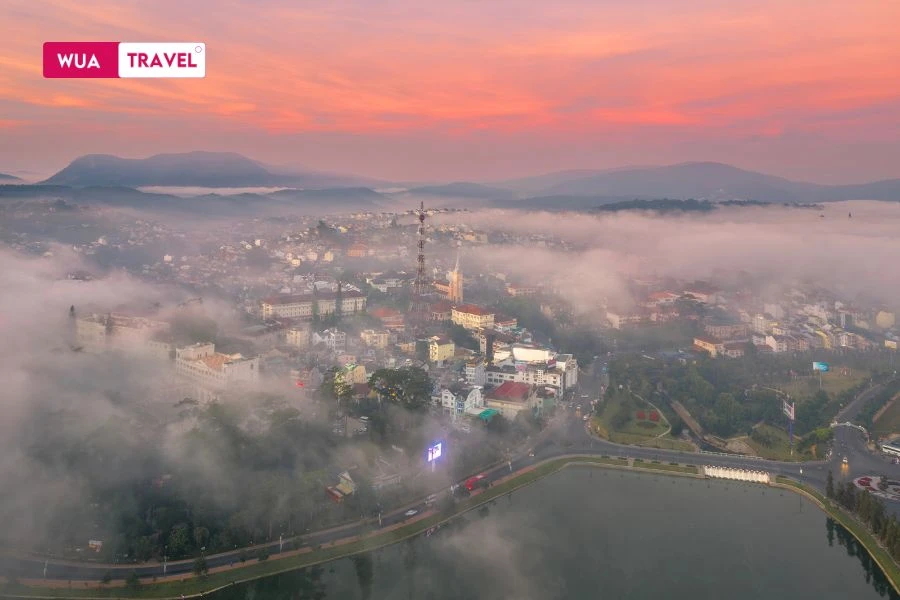
You can leisurely stroll around Xuan Huong Lake, admire the green pine rows, or wander in small alleys full of brilliant yellow wild sunflowers. The fresh air of Da Lat makes every step relaxing and pleasant, giving the feeling of being lost in a completely different space compared to the hurried pace of life in other cities.
The dry season in Da Lat is not only great for outdoor activities but also the ideal time to admire colorful flower gardens, such as hydrangea gardens or lavender gardens. The flower fields stretch out like a carpet of colors, creating a beautiful landscape that you cannot miss when visiting this city. In the morning, when the fog still lingers on the streets, Da Lat appears so poetic and charming.
In addition to the beautiful flower gardens and landscapes, Da Lat also has many interesting places to visit such as Datanla Waterfall, Strawberry Garden, or Linh Phuoc Pagoda with its unique architecture. In particular, you can visit the small and pretty cafes among the lush green gardens to enjoy a hot cup of coffee, enjoy the quiet and relaxing space.
Tip: If you have the opportunity to visit Da Lat during the Da Lat Flower Festival (usually held in December), you will be able to admire colorful festivals and participate in unique entertainment activities, bringing back memorable memories.
Best time to visit Phu Quoc
The best time to visit Phu Quoc is from November to April, when the dry season begins and the island is resplendent in golden sunshine, blue sea and clear skies. The average temperature is around 25–30°C, warm enough to soak in the crystal clear water, but still cool enough for you to leisurely stroll along the creamy white sand. For Quang, the feeling of waking up in a homestay near the sea, listening to the sound of waves gently lapping against the shore every morning, is one of the most unforgettable memories of his journey to explore Phu Quoc.
This is also the time when Phu Quoc nature shows off its wild and peaceful beauty. You can spend the whole day exploring An Thoi archipelago by boat, diving to see corals at Hon Mong Tay, or lying under the coconut trees at Bai Sao without having to do anything. The warm sunshine, salty sea breeze and the smell of grilled seafood from roadside stalls seem to awaken all your senses.
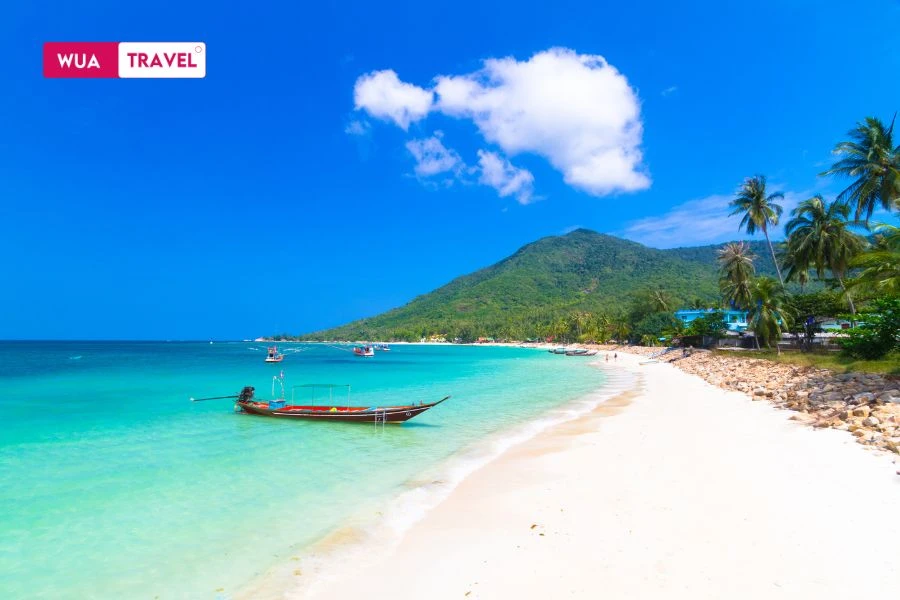
Not only the sea, Phu Quoc also attracts by the rustic local culture. An afternoon wandering Duong Dong market, chatting with a fish seller about the fish sauce season, or sitting drinking coffee in a small shop in the middle of a fishing village – is enough to see that Phu Quoc is not only a resort, but also a place to touch the tranquility.
Tip: If you like a lively atmosphere, visit the island around New Year or December, when the resorts host many exciting festivals and events. But if you want to enjoy the quiet beauty of the pearl island, go at the beginning of the dry season, when the sea is still blue and there are not too many tourists.
Best Time to Visit Vietnam by Activity
Vietnam is a diverse destination with many attractive tourist activities spread across many regions and seasons of the year. Depending on the purpose of your trip, you can choose the right time to enjoy the best experiences, from swimming, exploring cultural heritage, trekking to participating in unique festivals. Understanding the best time for each activity will make your trip both more convenient and meaningful.
Beach and resort
The dry season from February to August is the time I am most excited when thinking about Vietnam’s beaches. The bright sunny days and clear blue sea make me unable to resist immersing myself in the cool water, enjoying the absolute peace and relaxation. I remember once coming to Nha Trang in June, waking up every morning to watch the sunrise on the long beach, enjoying fresh seafood right on the shore, that feeling is truly unforgettable.
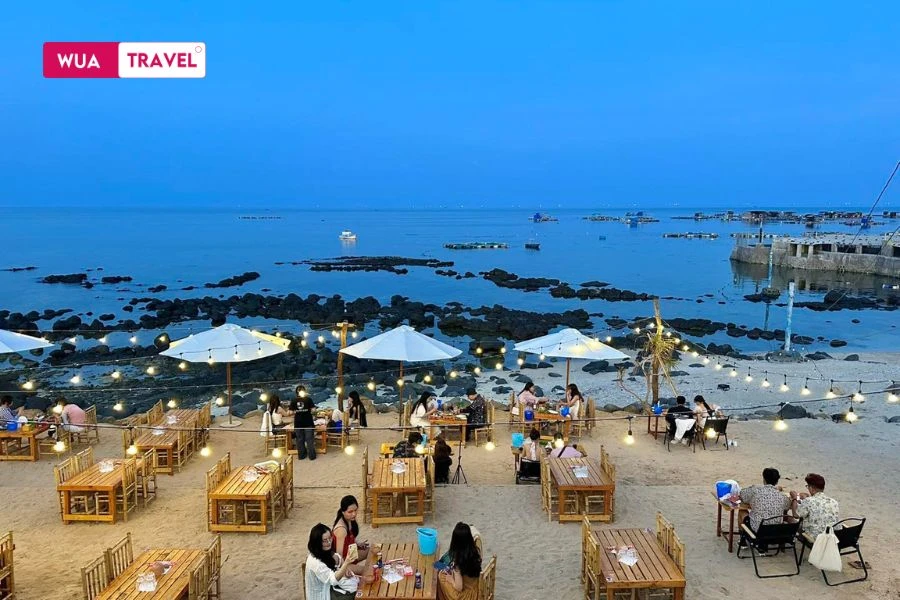
However, I have also experienced a trip to the beach during the rainy season, when prolonged rains and storms disrupted all plans. Therefore, I advise you to avoid going to the beach from September to January, especially in the Central region, to avoid bad weather days, which not only spoil the fun but also affect your health. Choosing the right season will help your beach experience be much more complete and safer.
Explore cultural and historical heritage
From March to May, Vietnam’s climate is quite pleasant, with little rain and moderate temperatures, making it ideal for visiting historical sites, ancient cities and cultural works. Hue is famous for its Nguyen Dynasty relic complex, mausoleums, temples and pagodas, where you can learn more about Vietnamese history and culture. Hoi An with its ancient town lit up with lanterns and Hanoi with its ancient streets are also destinations not to be missed during this time.
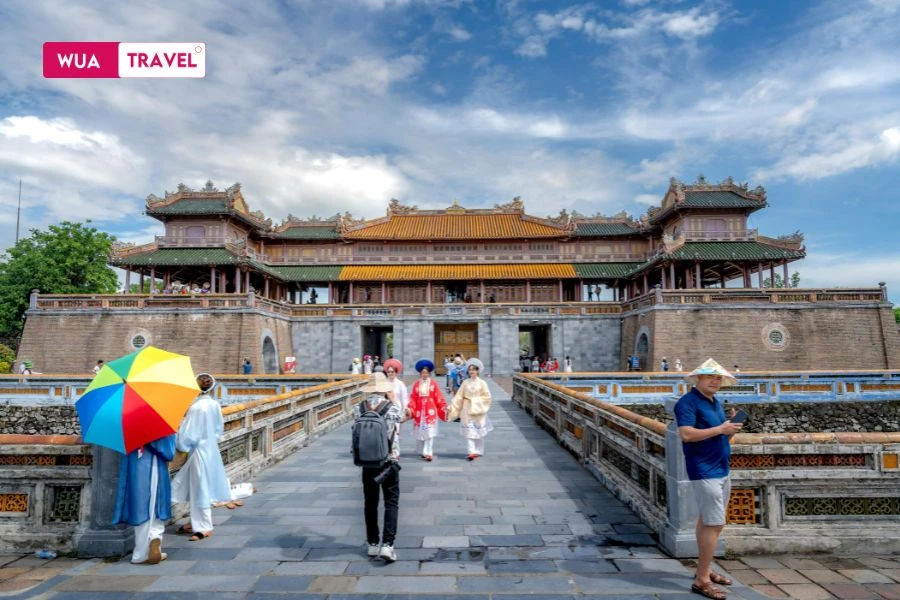
In particular, the Hue Festival in April is a great opportunity for you to immerse yourself in the traditional art space with vibrant performances and parades. Every time I participate in the festival, I feel the vitality of an ancient culture, making the trip not only a tourist but also a journey to deeply understand the people and history of Vietnam.
Trekking and exploring nature
Autumn from September to November is the ideal time for trekking and exploring nature in the northern mountainous regions such as Sa Pa, Mu Cang Chai, and the Northwest. The climate is cool, pleasant, and the air is fresh, creating favorable conditions for traveling and exploring ethnic minority villages. This season is also the time when the rice fields turn golden, creating beautiful natural scenery, very suitable for photography and sightseeing activities.
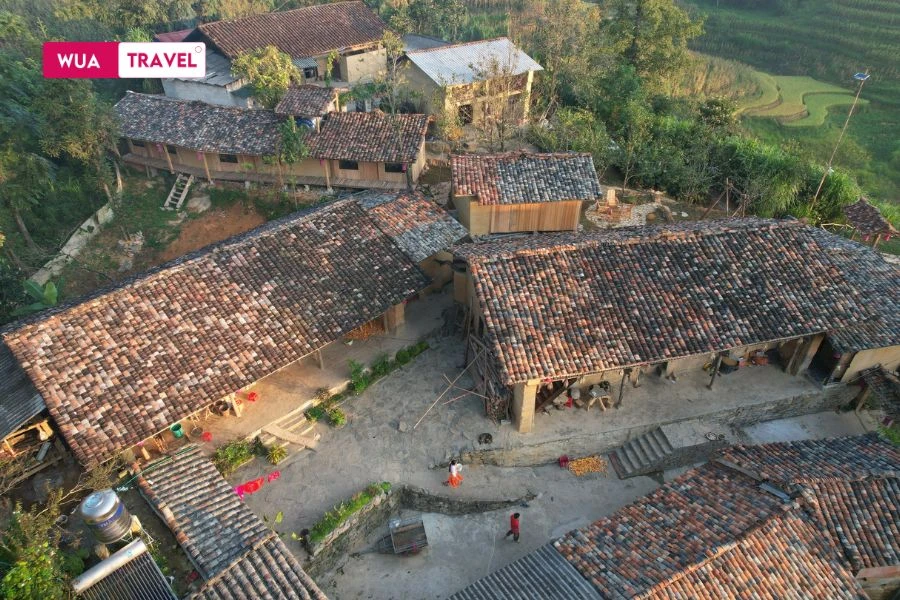
Phong Nha – Ke Bang, one of the world’s most famous cave areas, is also an attractive destination during the dry season, from February to August, and also in the fall. Cave exploration and jungle adventure tours are more convenient and safer during the dry season. In contrast, the rainy season from June to August is often difficult due to slippery roads, high risk of flooding and landslides, not suitable for trekking.
Participate in traditional festivals
Vietnam has a rich and diverse festival culture, lasting all year round with many large and small festivals taking place in each region. Tet Nguyen Dan is the biggest festival, usually held in January or February, marking the beginning of the new year with many traditional rituals, family reunions and special entertainment activities.
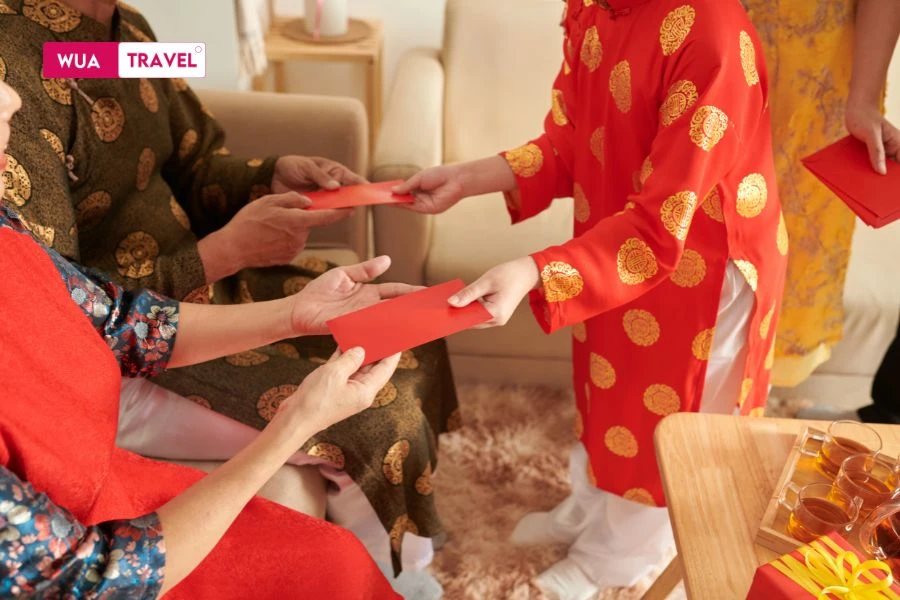
Hue Festival in April is a major cultural event, converging traditional art performances, parades and unique exhibitions, attracting a large number of tourists. Hoi An Lantern Festival takes place every month on the full moon day, creating a magical scene with thousands of lanterns lighting up the ancient town. The Central Fisherman’s Worship Festival takes place in July – August, a traditional festival of fishermen to pray for a favorable fishing season and peace at sea. Participating in the festival not only helps you experience the deep culture but also meet and interact with the locals, understanding more about the customs and practices of each region. However, you should book rooms and tickets early because the festival season is often very crowded.
Best time to visit Vietnam through festivals
Special festivals are also a great time to travel to Vietnam. From the bustling atmosphere of Tet at the beginning of the year, to traditional festivals, flower seasons, or the ripe rice season in the fall – each period brings a very unique nuance of the country. This is when Vietnamese culture, landscapes and people are most clearly expressed, making the trip more memorable and emotional. However, visitors should also pay attention to the holiday schedule to avoid times when services are limited or prices increase.
Lunar New Year
Tet Nguyen Dan – also known as the traditional Tet – usually falls in late January or early February, and is the most important and sacred holiday of the year for Vietnamese people. This is not only the time of transition between the old year and the new year, but also the moment when the atmosphere of the whole country seems to slow down, become warmer, and filled with reunion and hope.
I was lucky to witness it all with my own eyes on a special occasion near Tet. When I stepped into the citadel, I felt like I was lost in a vivid ancient painting – where each mossy wall seemed to blend in with the bright red of the parallel sentences, the yellow of the blooming apricot blossoms. The graceful ao dai fluttered in the spring breeze, each gentle step on the old brick path, making me feel like time had slowed down. I followed the crowd to the shrines in the Imperial City, silently watching the incense offering and ancestor worship rituals reenacted solemnly and emotionally. The sound of the lion drum resounded loudly in the distance, the scent of agarwood wafted in the air, making my heart strangely moved. Tet in the Imperial City of Hue was not noisy and bustling, but was full of tradition, profound and poetic – a memory I will always carry with me.
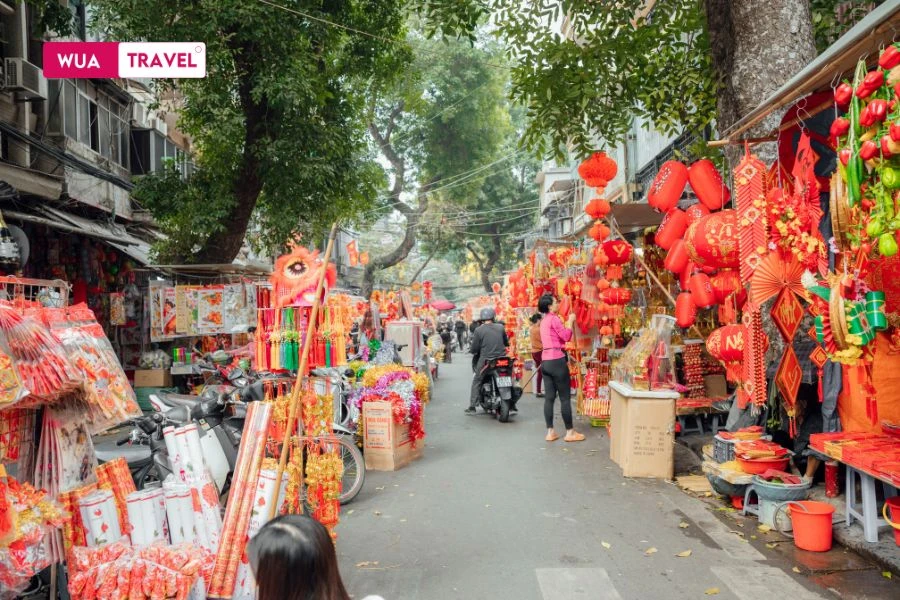
Tet is the occasion when you can feel the local culture most clearly: from the ritual of worshiping Ong Cong Ong Tao, to the custom of entering the house first, giving lucky money, wrapping Chung cake and Tet cake, or the family feasts filled with traditional dishes such as braised pork with duck eggs, pickled onions, fermented pork rolls… Each region has its own Tet color, but the common point is the warmth, familiarity, and hope.
However, if you are a tourist, be warned: many shops and attractions will be closed for the first few days of the year. Airfares and hotel prices may also increase due to the high demand for travel back home. But if you are not in a hurry, staying in Vietnam during Tet will be a unique and profound experience — unlike any other time of year.
Hue Festival
If you’ve ever wondered what ancient Hue looked like, the Hue Festival is the perfect time to fully experience the spirit of the ancient capital. Taking place every two years, usually from late April to early June, the festival is more than just a series of art performances – it’s when Hue truly comes alive as the imperial capital it once was.
I visited Hue during the festival season once – and that feeling is still intact. When the yellow lights began to dye the entire Imperial City, the palanquin procession with the echoing sound of ceremonial drums, I felt like I was standing in the middle of an epic. The nights watching royal dances right in front of the Thai Hoa Palace, or walking under the red phoenix trees by the Perfume River, letting the wind carry the light scent of incense… All of Hue is unforgettable.
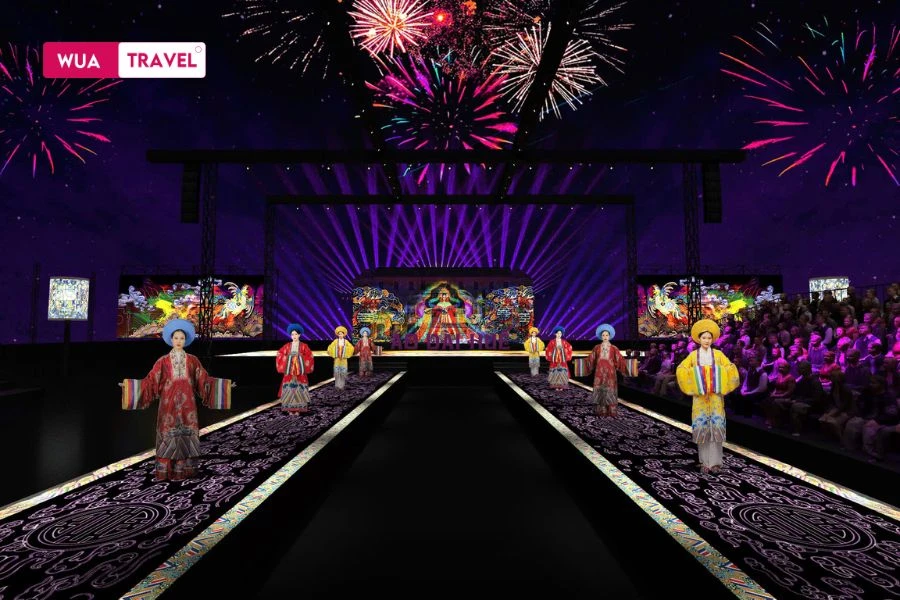
The festival brings together a series of special programs: from the Nam Giao ceremony, Ao Dai performance, royal court music, to street art, exhibitions, film screenings and even a light festival on the riverbank. Hue these days is both quiet and lively – an interesting blend of tradition and modernity.
Tip: Check the official website for the exact schedule as the festival may change each year. Book early (1–2 months before the festival), choose accommodation close to the center for easy access to nightlife, and check the specific performance schedule as there are multiple stages taking place simultaneously throughout the city.
Da Nang International Fireworks Festival
Da Nang International Fireworks Festival (DIFF) is one of the most prominent events when traveling to Da Nang in the summer. Taking place annually from June to early July, the festival turns the Han River city into a brilliant stage of light.
The first time I came to Da Nang during the festival, I felt like I was living in a symphony of light and emotions. From the banks of the Han River, where everyone was eagerly waiting, fireworks were competing to light up the sky – each beam of light blooming, blending with the background music, creating a sparkling scene like a fairy tale. Each night of the competition was a competition between two countries, with unique fireworks styles, imbued with their own cultural identity.
The DIFF festival usually lasts about a month, each week there will be an official competition night, interspersed with street art and cultural activities, music performances and entertainment programs on the sidelines, making the atmosphere in Da Nang more bustling than ever.
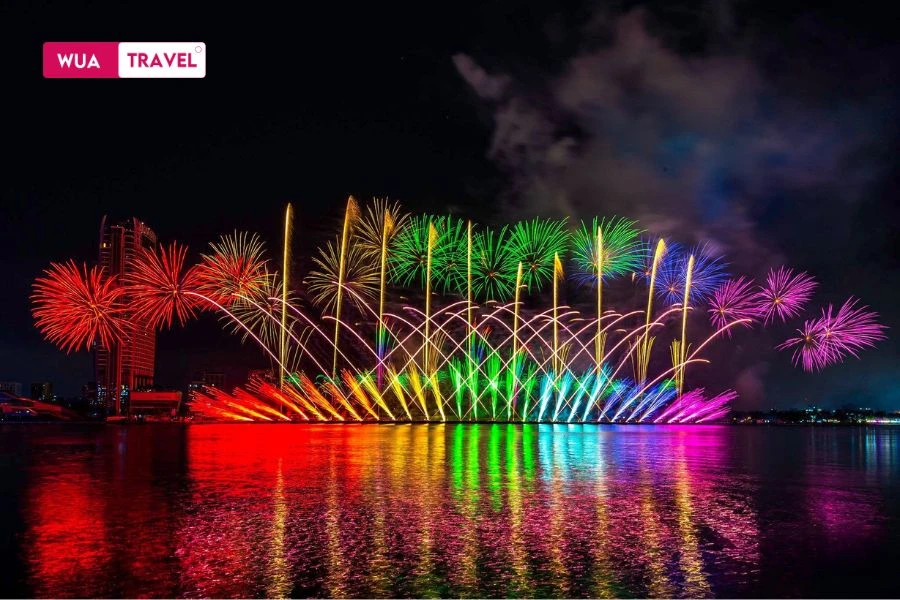
Tip: The festival takes place on Saturday and Sunday nights from June to early July. You can watch the fireworks from the stands, rooftop bars along the river, or the Dragon Bridge, Tran Thi Ly Bridge. Book your hotel room early, preferably in the city center or along the river. To get a good spot, arrive early before 6pm because traffic is often congested after 7pm. During the day, combine swimming at My Khe beach or visiting Ba Na Hills before returning to watch the fireworks.
Traveling to Da Nang in the summer, you will not only admire the beautiful fireworks but also feel a youthful, dynamic, colorful Da Nang. For me, DIFF nights are always unforgettable moments – when the sky is bright, and the traveler’s heart is also filled with happiness.
Mid – Autumn Festival
Mid-Autumn Festival is a special occasion, filled with light and joy for children, taking place on the 15th day of the 8th lunar month every year. Known as Children’s Festival, Mid-Autumn Festival is not only a time for children to have fun, but also an occasion for families to gather and enjoy specialties imbued with Vietnamese cultural identity.
Mid-Autumn Festival falls in September or October of the solar calendar, with a vibrant and joyful festive atmosphere spreading everywhere. In particular, big cities such as Hanoi, Ho Chi Minh City and Hoi An all organize large activities on this occasion.
The first time I participated in the Mid-Autumn Festival in Hanoi, I was really impressed by the bustling and bustling atmosphere throughout the streets. Every street, especially the old quarter, was decorated with red, yellow and green lanterns, shining under the gentle yellow moonlight. I clearly remember the image of children holding star-shaped lanterns and animal-shaped lanterns bobbing around the streets, with bright smiles on their faces.
In areas like Hoan Kiem Lake, the festival atmosphere is really bustling. Lion dance groups with drums urging, the laughter of children cheering every time the lions dance makes me feel the joy spreading clearly. What is special is that not only children participate, but adults also join in the atmosphere, join in the fun and congratulate their children.
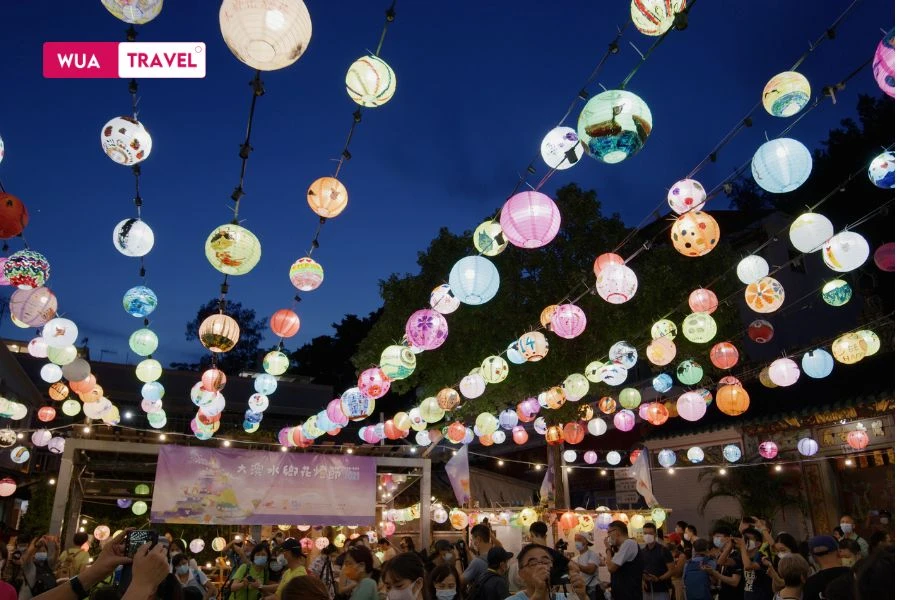
Mid-Autumn Festival cannot be without moon cakes. I remember, my family and I went to a famous cake shop in Hanoi to enjoy moon cakes and sticky rice cakes with all kinds of delicious fillings such as green beans, lotus seeds, and mixed. The sweet, fatty taste of the cakes, combined with hot tea, was truly an unforgettable experience.
Tip: You should book a room in advance because this holiday attracts a lot of tourists. Join the festivals in the old quarter or the center to enjoy the joyful and bustling atmosphere. Don’t forget to explore typical dishes such as moon cakes, sweet soup, and green rice, to fully experience the flavor of the Mid-Autumn Festival.
National Independence Day
Vietnam’s National Independence Day, also known as National Day, is celebrated on September 2 every year. This day commemorates the important event in 1945, when President Ho Chi Minh read the Declaration of Independence, officially declaring the establishment of the Democratic Republic of Vietnam.
Independence Day celebrations in major cities such as Hanoi and Ho Chi Minh City often feature exciting activities such as parades, fireworks displays, and solemn flag-raising ceremonies in parks and squares. In particular, many tourist areas also organize special programs and exhibitions on history and culture on this occasion, giving visitors the opportunity to learn more about the country’s struggle for independence.
On National Day, I had the opportunity to visit Hanoi and witness the solemn atmosphere of the flag-raising ceremony at Ba Dinh Square. At that time, the hurried footsteps of the parade, the strong sound of military music and the red flags with yellow stars fluttering in the wind, created a proud and majestic feeling. Standing in that space, I felt like the history of the nation was reviving in every breath of the country.
After the ceremony, I walked around Hoan Kiem Lake, witnessing the crowd happily gathering to celebrate, along with small parties, typical dishes such as banh chung, xoi, and che. The feeling at that time was unforgettable, when I realized that it was not only the event, but also the people and the culture imbued with national identity spreading to every corner of Hanoi on this important holiday.
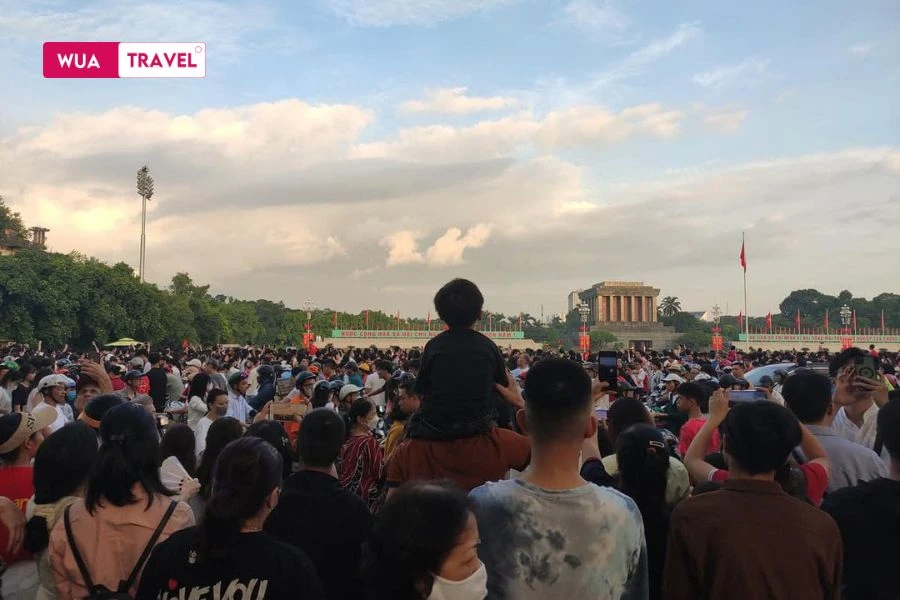
If you are in Hanoi during this time, do not miss the activities at Ba Dinh Square, where President Ho Chi Minh read the Declaration of Independence. This is where the solemn flag-raising ceremony and many other cultural events are held. In Ho Chi Minh City, you will feel the bustling atmosphere at famous landmarks such as the Independence Palace and the neighborhoods, where festivals and art exhibitions are often held.
Hung Temple Festival
Hung Temple Festival is one of the biggest and most important festivals in Vietnam, held on the 10th day of the third lunar month every year in Phu Tho, to commemorate the Hung Kings’ contributions to the nation’s founding. The festival is not only an opportunity for people to pay tribute to the Hung Kings but also an opportunity for tourists to learn about the nation’s unique cultural traditions.
Once I had the opportunity to participate in the Hung Temple Festival on March 10, it felt very special to stand among the crowd offering incense at the Hung Temple. The solemn atmosphere and the reverence of each person as they bowed before the altar of the Hung Kings really made me feel proud and moved. In addition to the incense offering ceremony, folk art performances, lion dances, and folk games made the atmosphere bustling and joyful. I also participated in a competition to make Chung cake and Day cake with the locals, this experience was really interesting and meaningful. The cakes with the strong flavor of the homeland made the festival even more cozy and memorable.
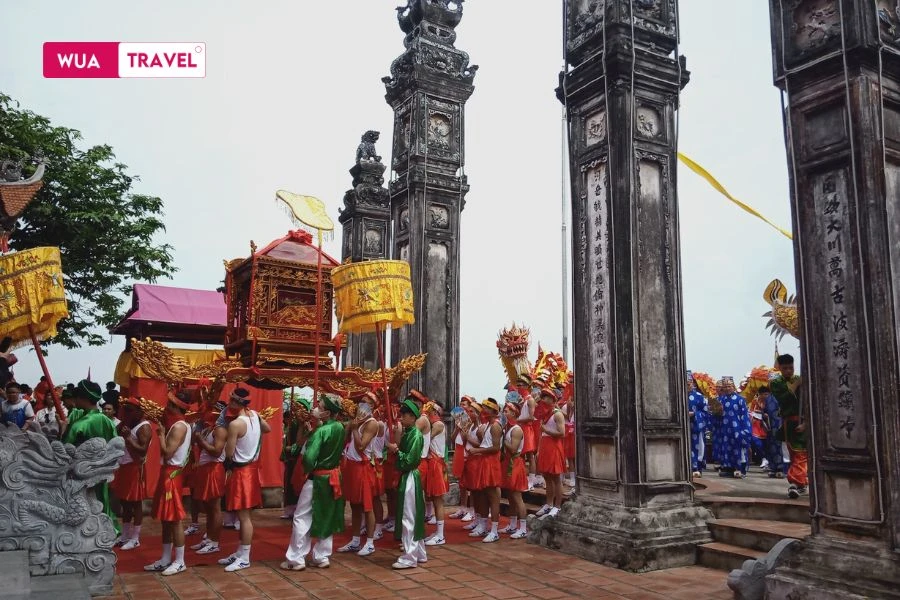
Travel tip: If you plan to attend the Hung Temple Festival, be prepared for a crowded trip because of the large number of visitors. You should book a hotel room in advance and choose a place to stay near the festival area for convenient travel. In addition, you can also participate in traditional cultural activities such as offering incense at Hung Temple, visiting museums and historical sites, and don’t forget to enjoy Phu Tho’s specialties such as banh chung and banh day.
Hung Temple Festival is not only an occasion for Vietnamese people to pay tribute to the Hung Kings, but also an opportunity to discover the beauty and vitality of traditional values, contributing to enriching your cultural experience in Phu Tho land.
When Not to Visit Vietnam (Important Travel Considerations)
Vietnam is a wonderful destination with diverse landscapes, rich culture and irresistible cuisine. However, like any place in the world, there are times or situations that you should consider carefully before you go. In this article, I share important considerations – from harsh climates to crowded holidays – so you can plan your trip smoothly and fully.
Stormy season
If you are dreaming of sunny afternoons on the beaches of Da Nang or adventurous trekking trips in Sa Pa, the rainy season is really not the ideal time to visit. The storm season in the Central region, from August to November, bringing prolonged heavy rains, sometimes flash floods and landslides. Especially at the end of the year, frequent storms cause flights and transportation to be canceled, many tourist attractions become difficult to access and outdoor activities are almost stopped. Meanwhile, in the North and South, from May to October, sudden thunderstorms and high humidity make you feel stuffy, and travel schedules can change constantly due to the weather.
I once went to Hue in October, fully prepared with a light shirt and sandals for a comfortable tour around the old town. But just a few hours after arriving, it started to rain, continuously all day. Although I still tried to walk around, my wet feet in the small streets, flooded roads, and humid air made the experience less enjoyable. The continuous rain not only changed my plans but also made the old town space become much darker and less colorful.
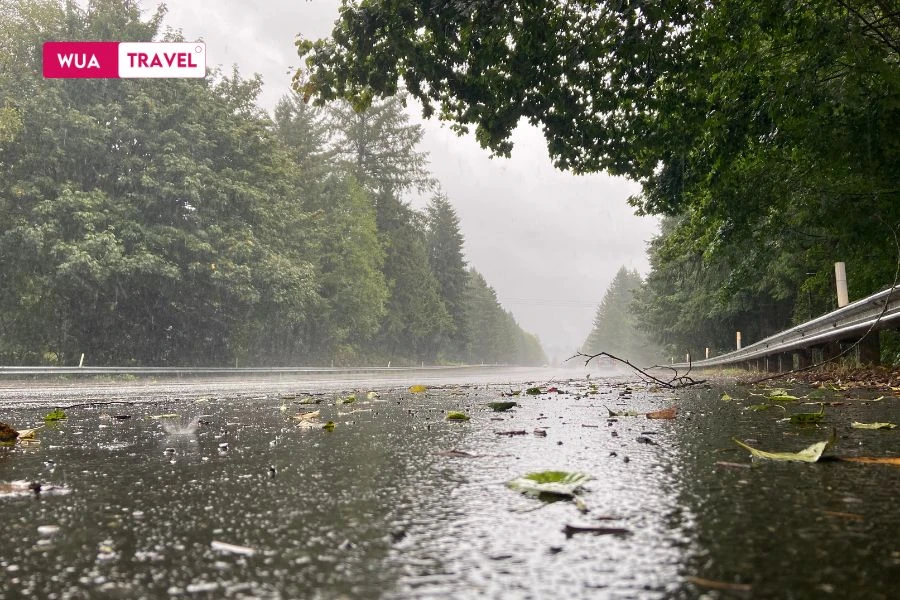
If you love outdoor activities, hunting for beautiful photos or simply want to explore nature, I strongly advise you to avoid going during the rainy season. The sudden rains not only make it difficult for you to move but also destroy the natural beauty of the scenery you are supposed to see.
Advice: Always check the weather forecast carefully for each area you plan to visit. Even in the same month, the weather in Ha noi and Phu Quoc can be completely different. Just a little preparation and attention will help make your trip smoother and more complete.
Lunar New Year
Tet Nguyen Dan, also known as Lunar New Year, is the biggest holiday of the year in Vietnam, usually falling in late January to early February. This is the time when the whole country takes a break, reunites with family, and celebrates the new year. However, if you are planning to travel during this time, be prepared for some surprises.
During Tet, many tourist services, restaurants and shops will be closed or operating at limited capacity. Major cities such as Hanoi and Ho Chi Minh City will be quieter than usual, as most people return to their hometowns to celebrate Tet with their families. Popular tourist areas may also lack the excitement and not be open as usual. I have been to Hanoi in the days leading up to Tet, and although there are many beautiful places to visit, I had difficulty finding restaurants or tourist services. The normally crowded streets were now quiet and there were few tourists.
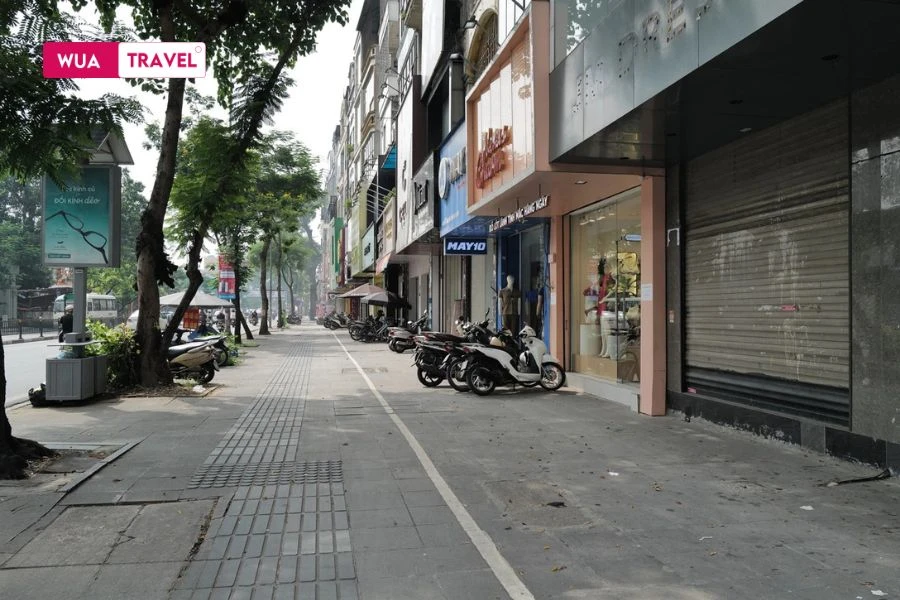
However, Tet also has a beautiful side that you can experience. This is an opportunity for you to feel the unique culture of Vietnam, such as participating in traditional festivals, admiring the colorful flower streets and enjoying the typical dishes of Tet. If you like this atmosphere, Tet can be an opportunity for you to explore the unique culture, but if you are looking for a relaxing trip with normal activities, you may feel a little disappointed.
Advice: If you want to experience Tet, come early about a week before to enjoy the festival preparation atmosphere. Be prepared to avoid surprises with schedule changes. Check carefully the local activities and services that are open during this time.
Hot weather
If you are not a fan of hot and humid weather, then May to August in Vietnam can make your trip quite difficult, especially in the North and Central regions.
North In the summer, from May to August, it is often hot, with temperatures reaching 38°C on peak days. Major cities such as Hanoi or Ninh Binh. In the summer, it feels like a “fire pan”. Although Hanoi has a very pleasant autumn, in the middle of summer, the hot and humid air makes you feel stuffy and uncomfortable. I still remember the time I traveled to Hanoi in June, although the early morning was still cool, but just leaving the hotel at noon, the harsh sunlight made me feel like I was being burned. The crowded streets, without a breath of wind, made me feel tired even though I just walked around the old town.
With destinations such as Ha Giang or Sapa, although it is usually cool in the morning and evening, these summer days, the temperature can reach 30-35°C, making you feel quite hot when participating in outdoor activities. The picturesque terraced fields in Ha Giang may not be as splendid if you have to trek under the hot sun. Therefore, if you want to enjoy the beautiful scenery without being tired by the heat, I recommend you plan in autumn or spring, when the weather is much more pleasant.
Central region in summer also affected by heat, but north The sun is more intense and lasts longer, making the air more stuffy and uncomfortable. Danang and Nha Trang, although famous coastal cities, in June, July, August, the air is extremely hot, especially in the afternoon. I went to Nha Trang in July, hoping to enjoy the beautiful beaches. However, the sweltering heat made me stop participating in outdoor activities and could only lie in the shade near the beach. Even with the sea breeze, the heat is still very harsh and it is easy to lose your strength when moving from one place to another.
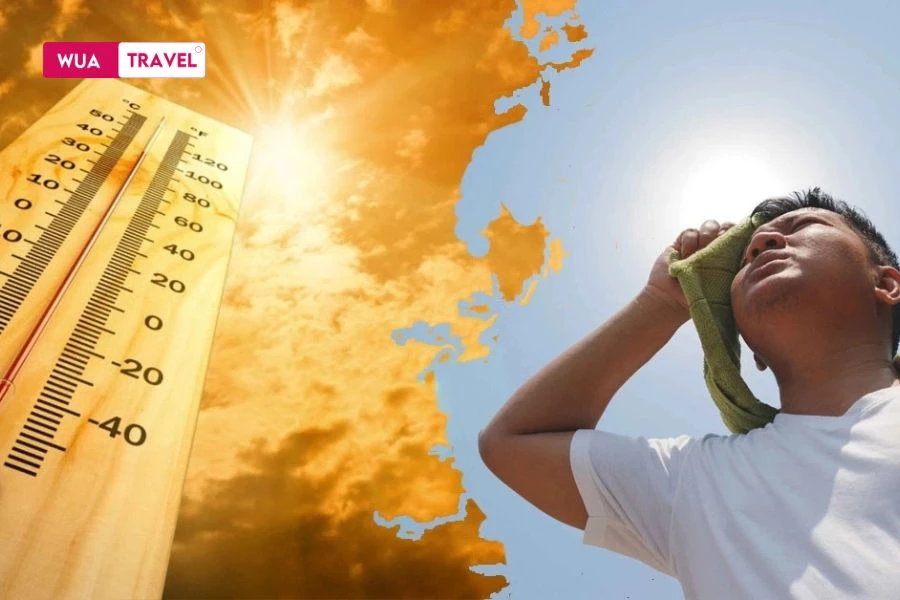
Advice: If you can’t stand the heat and humidity, avoid traveling to Vietnam during these months. Instead, the months March to May or September to November would be a more ideal time. In spring and autumn, the climate is cool and pleasant, very suitable for outdoor activities, sightseeing, and cultural exploration. The weather at this time is not too hot or too cold, helping you enjoy the trip without feeling tired under the harsh sun.
Peak tourist season
June to August is the peak tourist season in Vietnam, when families and groups of friends often choose summer vacation time to travel. However, this is also the period extreme heat in many areas, especially in the North and Central regions.
In summer, temperatures can reach record highs in cities like Hanoi, Danang or Saigon, with the heat not only making the trip tiring but also putting pressure on tourist attractions. The harsh sun in the North, with temperatures reaching up to 38°C, makes everything stuffy and uncomfortable, making outdoor activities such as visiting Hanoi’s Old Quarter or trekking in Sapa extremely difficult.
Along with that, the peak season also brings large number of tourists, making popular destinations such as Ha Long, Hoi An or Phu Quo cbecome crowded and cramped. The jostling, long queues to participate in activities or simply finding a quiet corner to relax in a crowded space will make many people feel impatient. I once had a trip to Da Nang in July, and the heat combined with the crowd really made it impossible for me to fully enjoy the beauty of the beaches here. Although the sea was very beautiful, just stepping out of the hotel, the heat was like a wave rushing in, making me want to run back into the air-conditioned room.
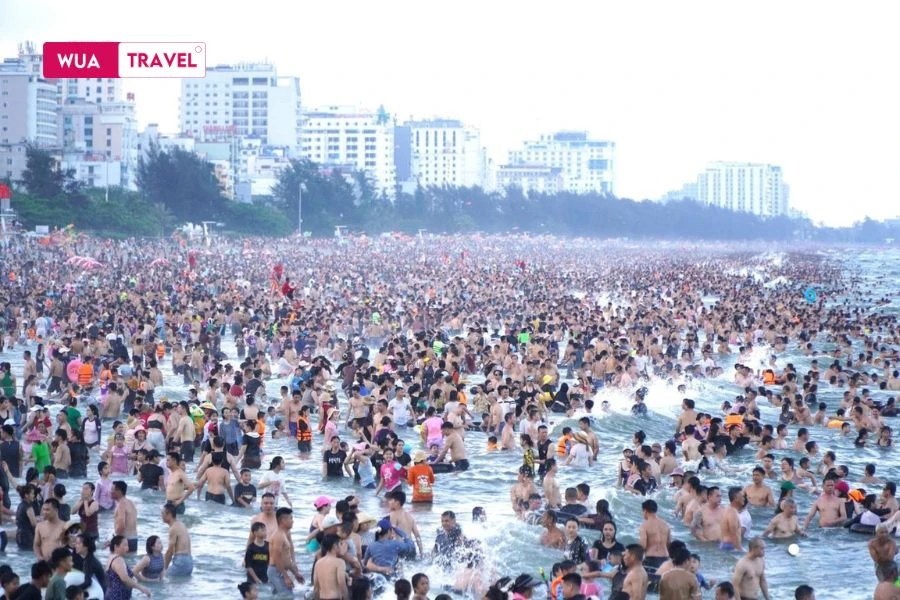
However, peak season has a special attraction. This is the time when big festivals like Da Nang Fireworks Festival, Hoi An with sparkling lantern nights, or Mekong Deltaduring the flood season creates picturesque moments. If you love the bustling atmosphere, and do not mind the heat, then this will be a great opportunity to immerse yourself in these special events.
Advice: If you are not a heat-tolerant person and do not want to be surrounded by crowds, consider choosing other times of the year such as fall (September to November) or spring (March to May). These are more ideal times when the temperature is pleasant and the air is not too crowded. If you still choose to go in the summer, plan ahead to avoid the situation of “no rooms available”, and prepare well with cool clothes, sunscreen and drinking water to make the trip more comfortable.
Final Tips: How to Choose the Best Time Based on You
There is no single “perfect time” to travel to Vietnam – just the time that suits you best. Each season of the year, each land in Vietnam has its own beauty and also comes with certain limitations. It is important that you clearly define what you want from this trip:
Do you like cool weather, romantic scenery, beautiful photography?
Come in autumn (September – November), especially the North with its golden forests, ripe rice, and clear weather.
Do you want to explore traditional culture?
Try to come closer to Lunar New Year – but plan early and prepare for the streets to be deserted.
Do you love the sea and sunshine?
The dry season in the South (December – April) is when Phu Quoc Island, Con Dao or Nha Trang are at their most brilliant.
Do you love quiet and want to “escape”?
Choose off-season travel – less crowded, more affordable, and a chance to experience Vietnam in a more authentic way.
Sincere advice: Before you book your ticket, don’t just look for the “best time to visit Vietnam” – ask yourself: “What am I looking forward to most from this trip?” Once you know that, Vietnam always has a season just for you.
Choose based on your travel goals, not just the weather
Great weather doesn’t always mean a great trip. Many people ask me, “Quang, what’s the best month to visit Vietnam?” — but the question should really be, “What do you want to experience on this trip?”
If you are looking for a relaxing beach holiday, March to May is the ideal time – clear skies, mild sunshine, and blue seas in the Central and Southern regions. But if you love the beauty of nature and light – wait until the rice harvest season in the Northwest, around September to November. I once stood in the middle of Mu Cang Chai valley at sunset, the terraced fields shimmering in golden light – that feeling, good weather alone is not enough to create.
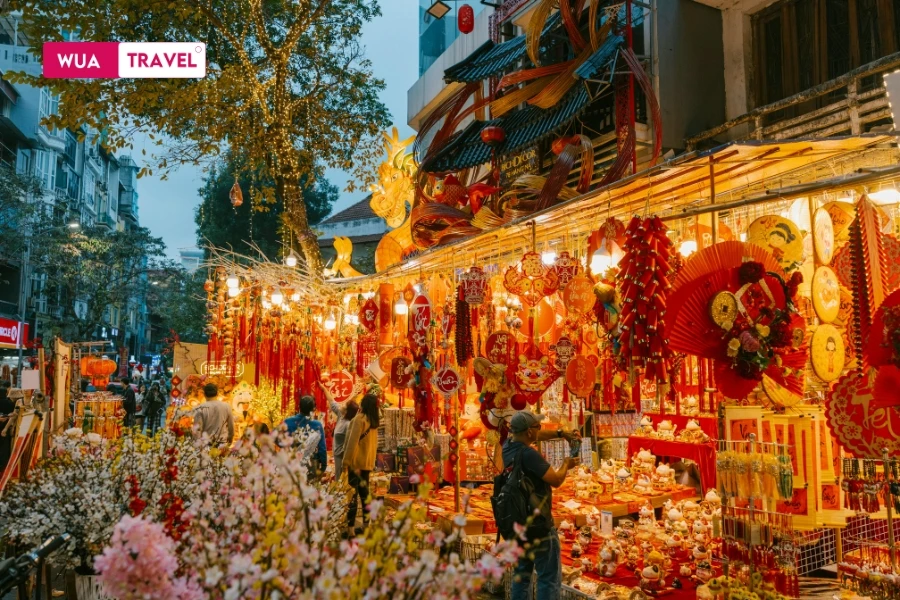
If you want to immerse yourself in Vietnamese culture, try coming during Tet or Hue Festival. There may be some drizzle during your trip, but the joy of seeing people gathering to wrap banh chung, or walking among the crowd in flowing ao dai… is irreplaceable.
Quang’s advice: Instead of tying your itinerary to the weather forecast, start with what you want to feel and explore. When you choose a time based on your goals, you’re not just “traveling” — you’re actually living the journey.
Use flexible travel dates for better prices
One of the easiest ways to save money on travel in Vietnam is to Keep your schedule flexible, especially with departure and return dates.. Prices for flights, trains, and even hotel rooms in Vietnam can change dramatically in just a few days – especially during weekends, holidays, or peak tourist seasons.
I had planned to fly from Ho Chi Minh City to Hanoi in mid-July. Initially chose Friday, but tried to postpone it to Wednesday – the result was Ticket price is cheaper by nearly 1.5 million VND and choose a better flight time. Just be a little flexible, the experience is also smoother and more economical.
Tip: Avoid traveling on Fridays and Sundays unless absolutely necessary, as prices are usually the highest. Use flight search engines that have a “monthly price view” feature (like Google Flights, Skyscanner, Traveloka). If you’re traveling for a long period, keep 1–2 flexible start/end dates, so you can adjust to fares or weather. For hotels and tours, book early in peak season and late in low season – many have surprise promotions.
Keeping a flexible schedule not only helps you save money, but also increases your chances of enjoying unexpected experiences – like a beautiful homestay available at the last minute, or a quiet flight without crowds. And sometimes, that’s what makes your trip the most memorable.
FAQ about Vietnam Travel Time
Still wondering when to book your trip, what to pack, or how to plan around the weather? Here are some of the most common questions travelers ask before visiting Vietnam – and the answers you need to plan with confidence.
When is the rainy season in Vietnam?
Vietnam has three different climate zones, so the rainy season is not the same throughout the country:
North & South: rainy season lasts from May to October, usually short but quite dense thunderstorms.
Central region: heaviest rain from August to November, may be prolonged with storms.
Should I travel to Vietnam in the summer?
Summer (June–August) is the peak season for domestic tourism, especially in coastal cities like Da Nang, Nha Trang, Phu Quoc. The weather is sunny and the sea is blue, but it is also very hot, especially in the North, where temperatures can reach 37–39°C. If you can tolerate the heat well and enjoy the bustling atmosphere, this is still a great time. Otherwise, consider going in March–April or October–November to enjoy it more fully.
What is the cheapest month to travel to Vietnam?
Normally, May, June and September is the “golden” time for budget travel. This is the transitional season, not yet a major holiday season, so airfares, hotels or tours are often cheaper. Quang often chooses these times to “escape the city” and explore more peaceful destinations – for example, Quy Nhon in May is a great suggestion.
Should I travel during Tet?
Tet Nguyen Dan is the time very special to explore Vietnamese culture – you will see the streets are colorful, Tet flowers are blooming, spring markets are bustling and many unique traditional rituals. However, this is also the time prices increase sharply, many shops are closed, train and bus tickets are sold out quickly. If you love cultural experiences and are prepared, Tet will leave an unforgettable impression. But if you want convenience and savings, choose another time of the year.
What is the best time to explore Northern Vietnam?
Spring (March–April) and autumn (September–November) are ideal times to travel to the North. The weather is cool, there is little rain, and the sky is clear – perfect for exploring Hanoi, Ninh Binh, Sapa or Moc Chau. In particular, autumn in Hanoi and the rice harvest season in the Northwest are very “emotional” experiences.
If you like the sea, what month should you visit Vietnam?
From March to August is the most beautiful sea season. In which ,April–June is the golden time to explore the beaches of the Central region such as Da Nang, Nha Trang, Quy Nhon, or the Southern region such as Phu Quoc and Con Dao. The sea is calm, the water is clear, the sun is beautiful – ideal for activities such as swimming, snorkeling or yachting.
When should I avoid traveling to Vietnam?
You should Avoid stormy areas during the rainy season (August–October in Central Vietnam) or big holidays like April 30, Lunar New Year if you are not used to crowds, high prices and limited services. In addition, July–August sometimes has unstable weather (hot sun mixed with heavy rain), especially in the North and Central regions.
What is the best time for trekking or nature tourism?
October–April is a great time for trekking in the northern mountainous regions (Sapa, Ha Giang, Mai Chau). The weather is dry, the climate is cool, the scenery changes dramatically with the seasons. If you like cloud hunting, you should go from October to early December. If you like blooming flowers, Moc Chau in January-February is a poetic picture.
Which season should I choose if I want to explore culture and festivals in Vietnam?
From January to March is the most vibrant traditional festival season in Vietnam, especially after Lunar New Year. In addition, each region has its own festivals such as:
Hue Festival (April or June depending on the year) – royal cultural festival
Hoi An Lantern Festival– held monthly (full moon of the lunar calendar)
Kate Festival of Cham People– takes place in September–October
If you love culture, these are times well worth considering scheduling.
Conclusion: The best time to visit Vietnam
Maybe you’ll fall in love with the golden glow of northern rice terraces in September, or feel most alive under the spring drizzle of March, when cherry blossoms bloom in the mountain air. You might crave the beach escape of January, or the festive pulse of Tet in February. Every month in Vietnam brings a new rhythm, a new color, a new way to understand this vibrant, layered country.
After years of exploring Vietnam’s seasons – sometimes chasing the sun, sometimes learning from the rain – I’ve realized this: the best time to visit isn’t always when the guidebooks say so. It’s when you’re ready to slow down, stay curious, and let the country unfold in its own way.
So whenever you decide to go – just go wholeheartedly. Vietnam will meet you halfway, with open skies, open kitchens, and open hearts.
Start your journey with wuatravel.com – because Vietnam deserves to be experienced, not just seen.


